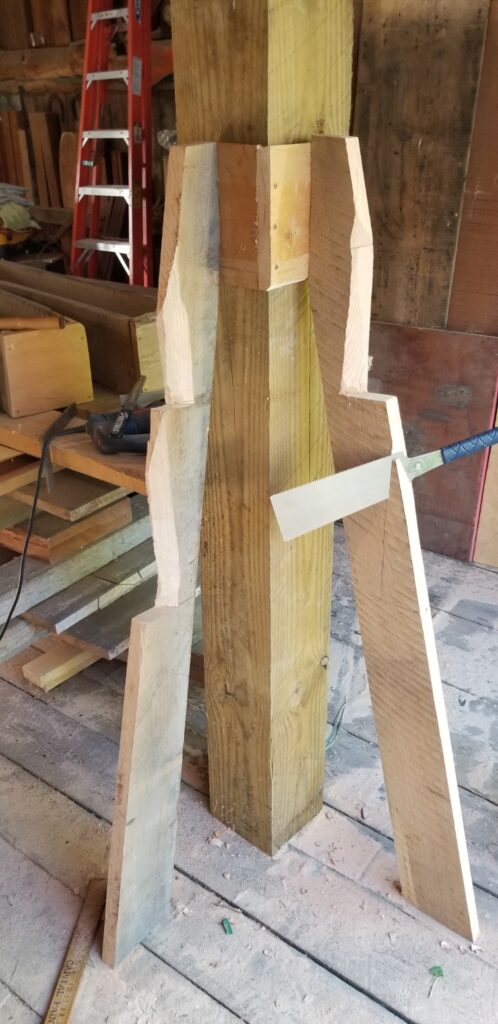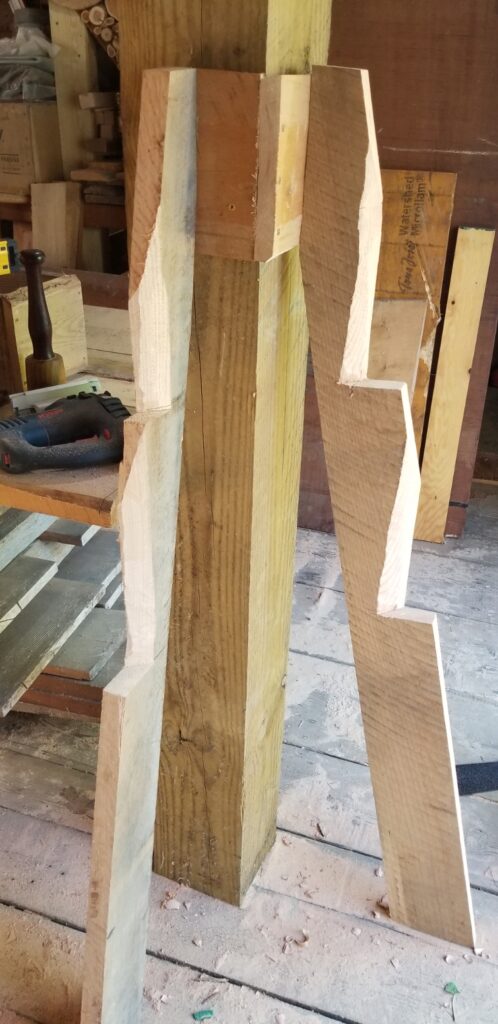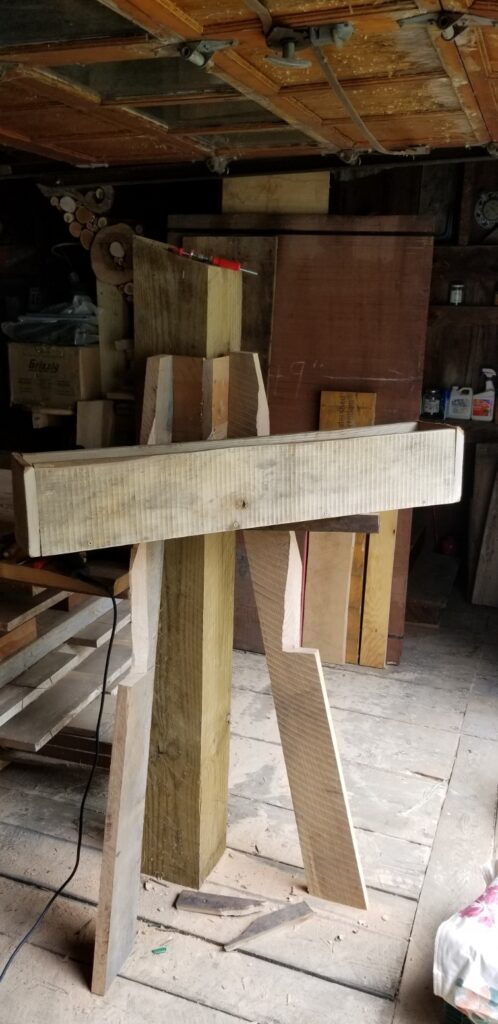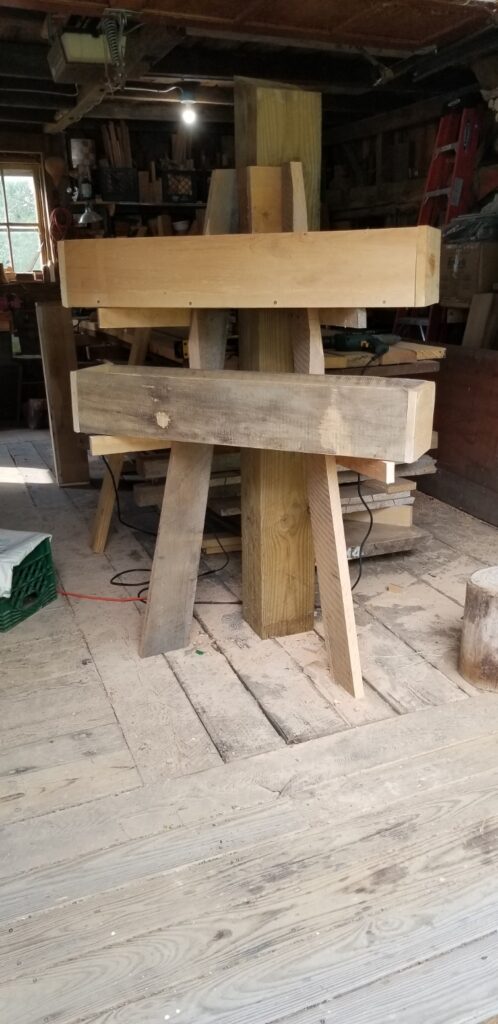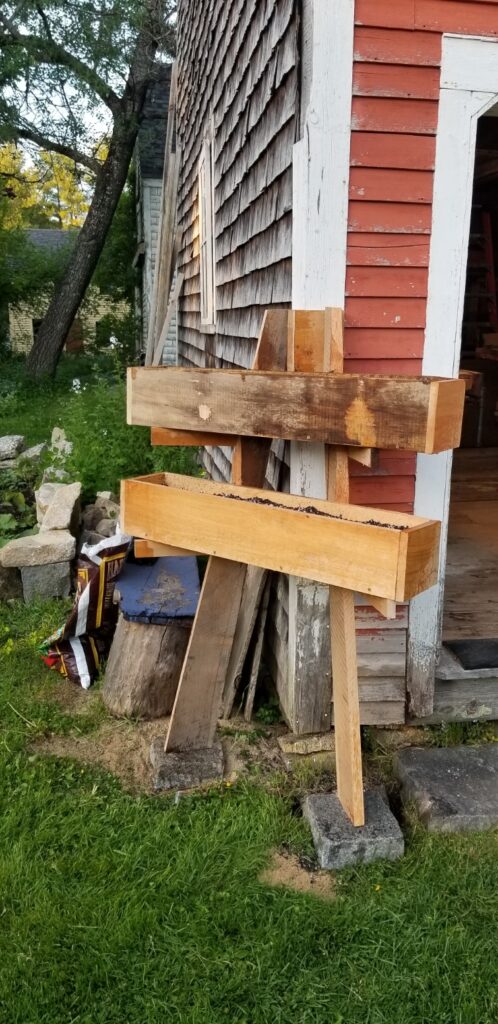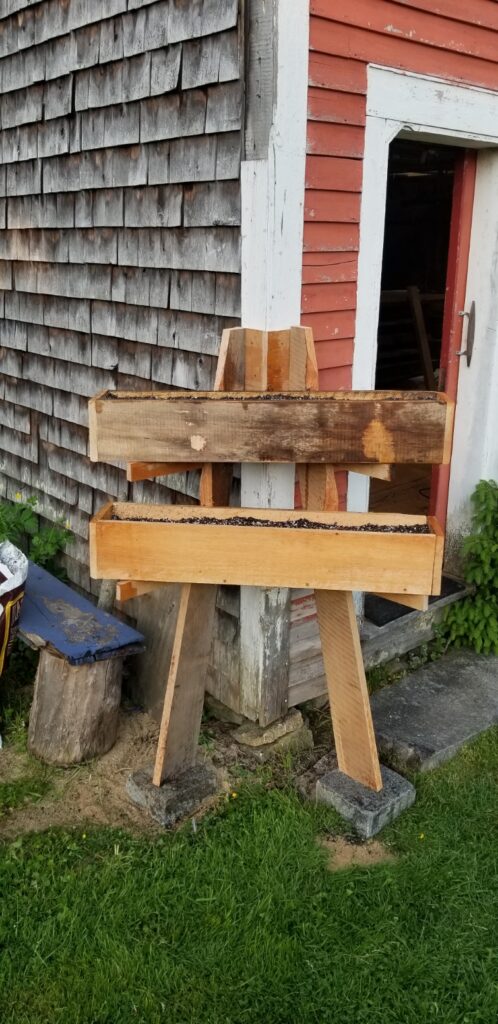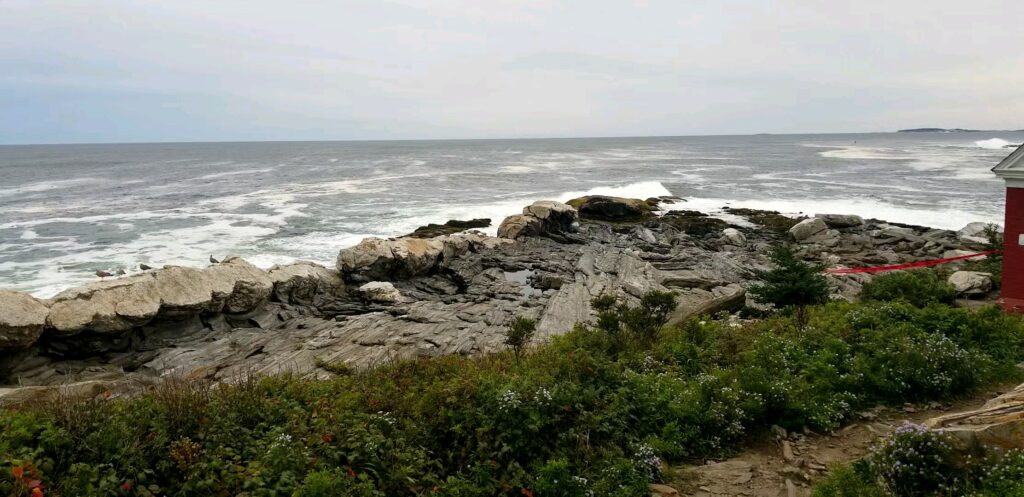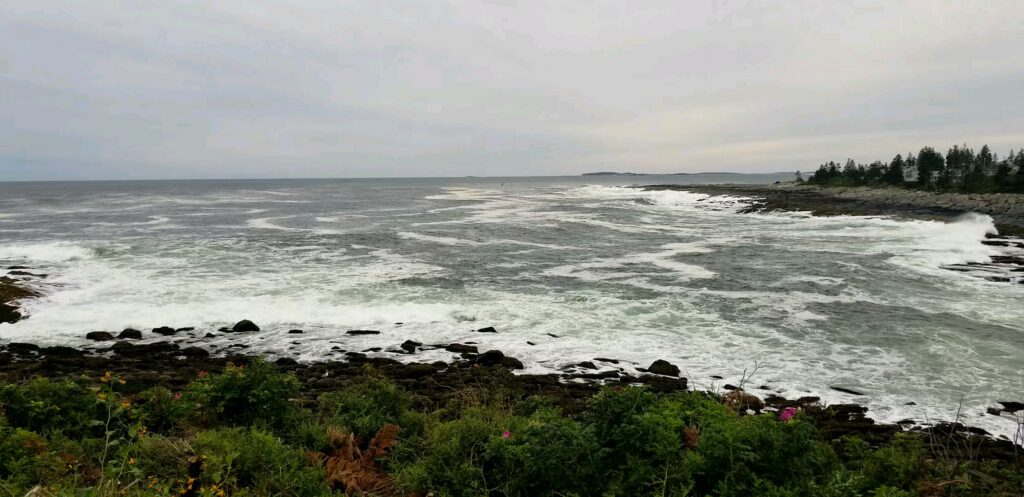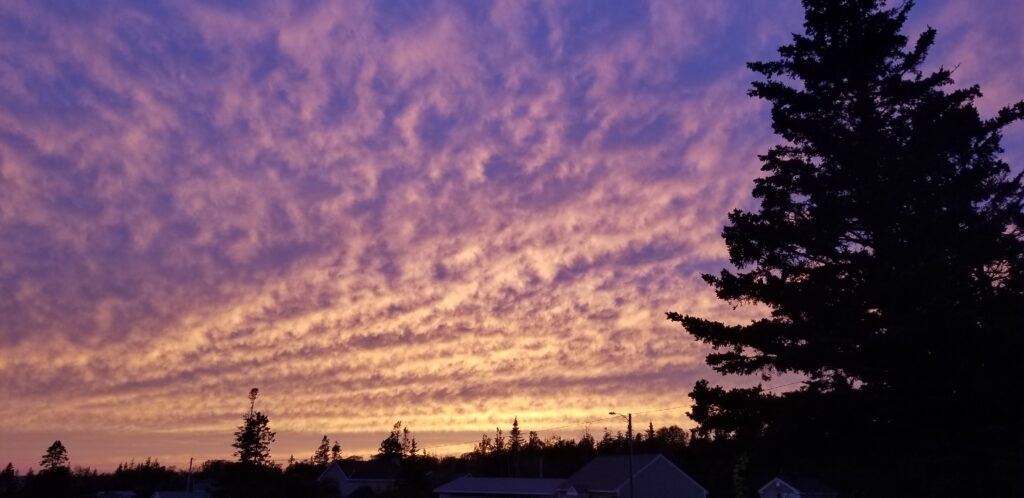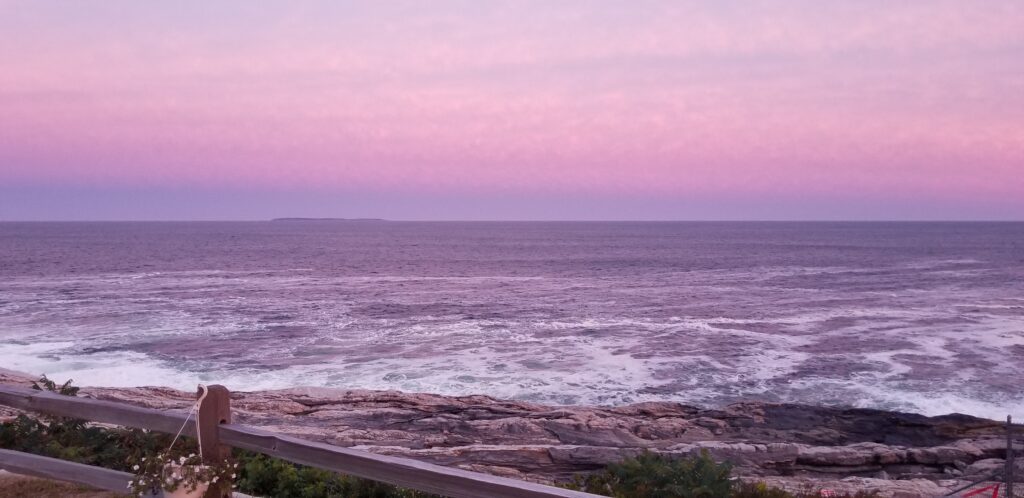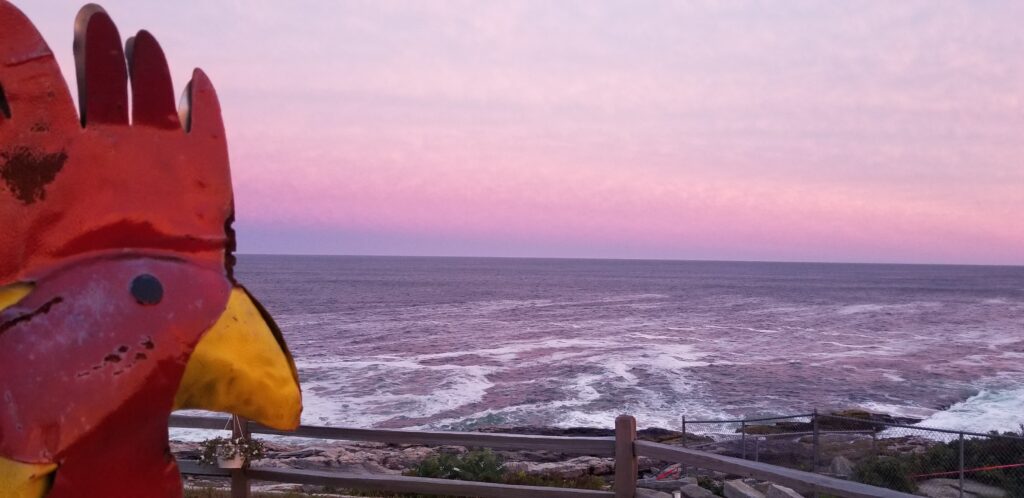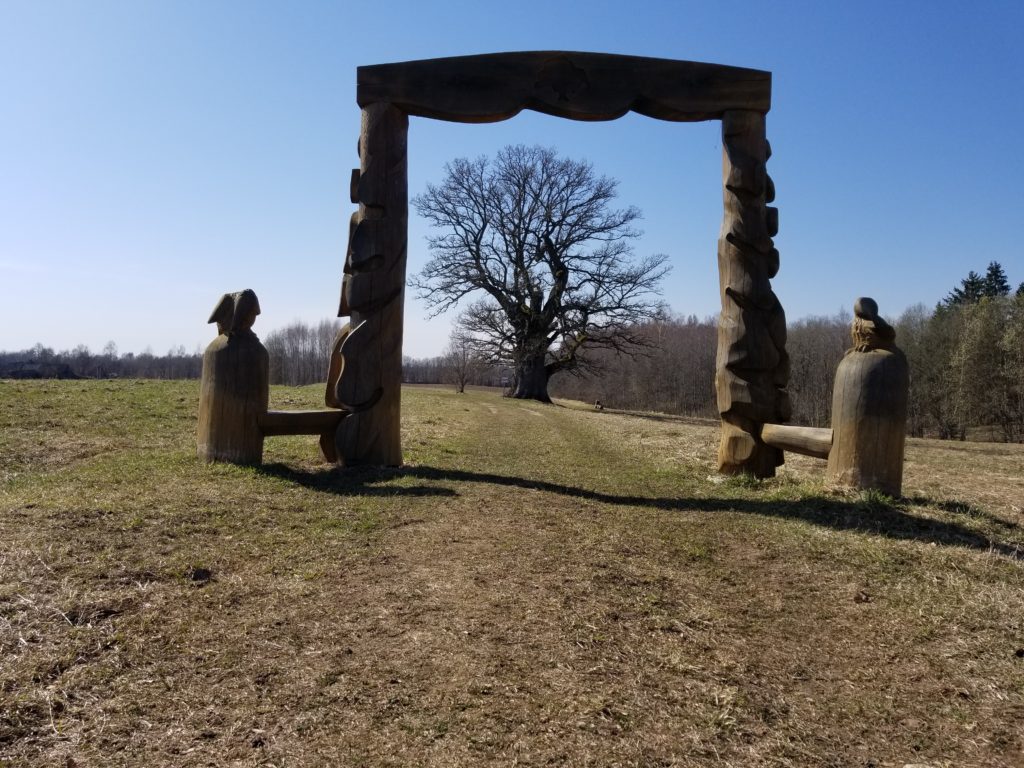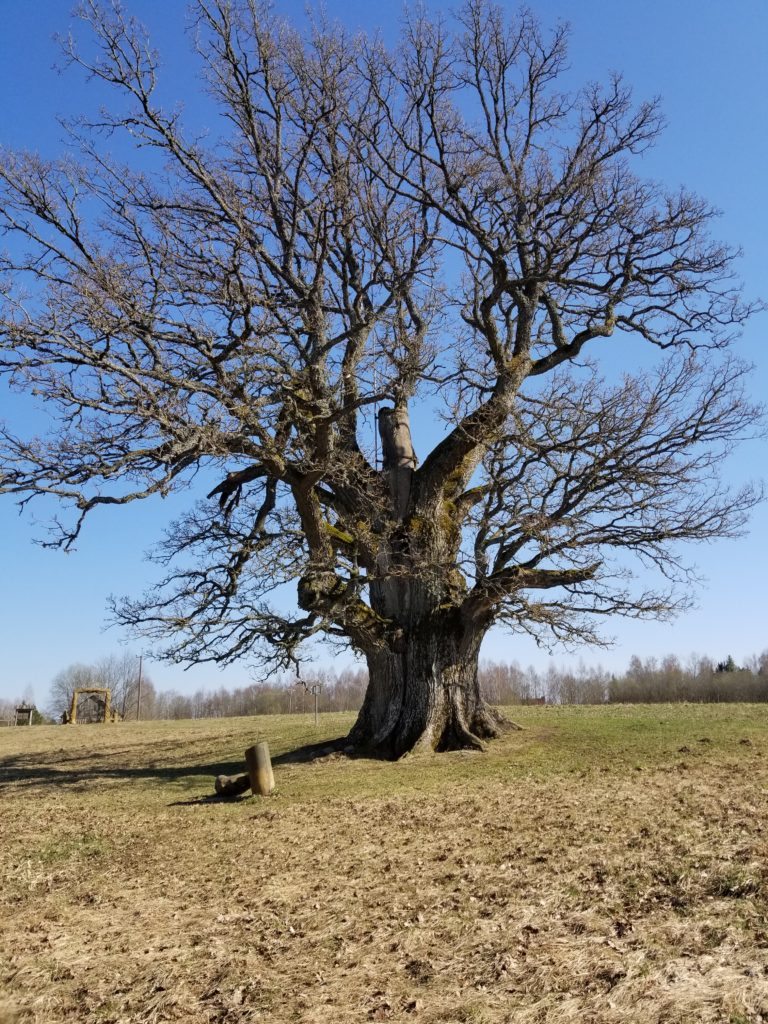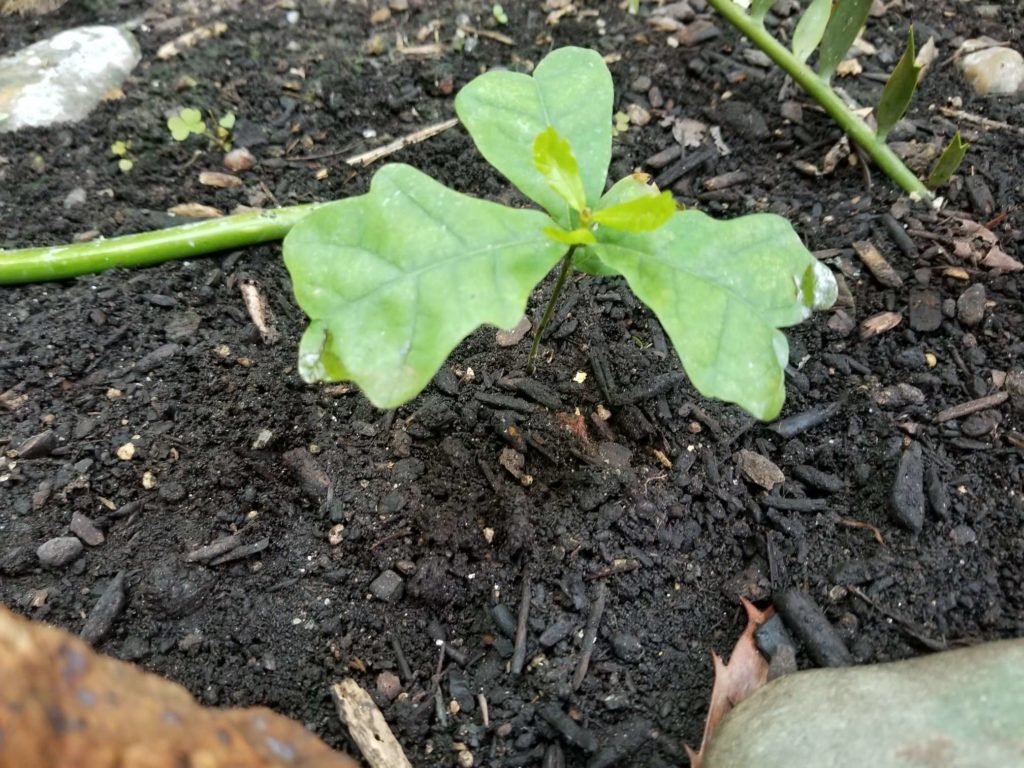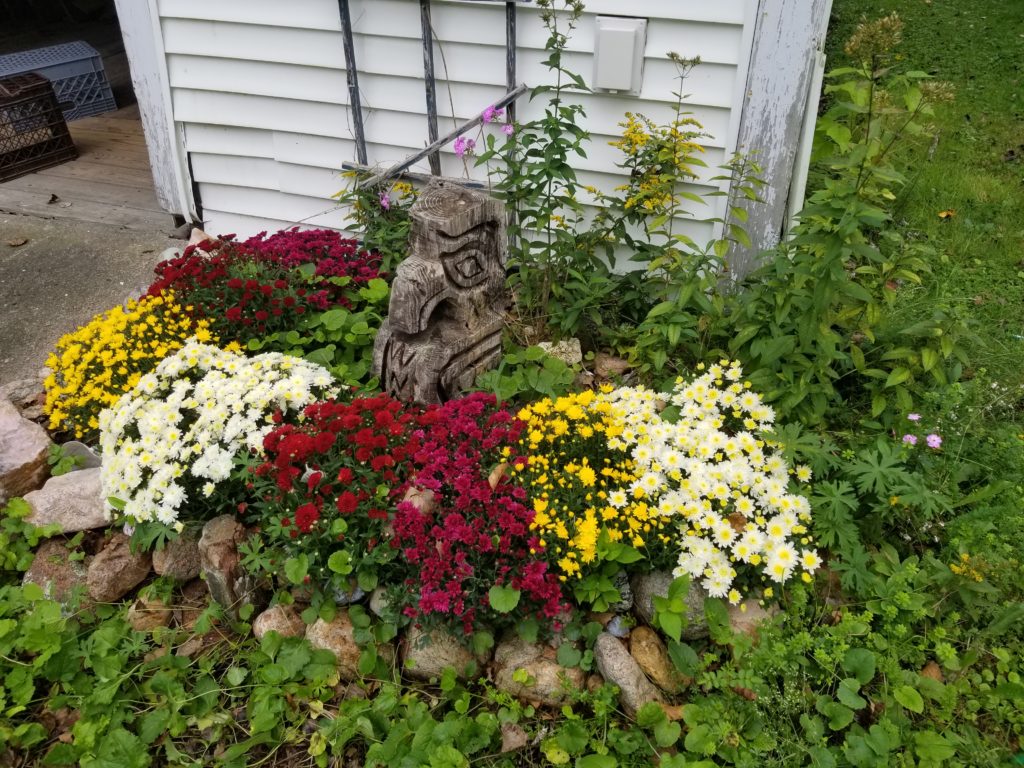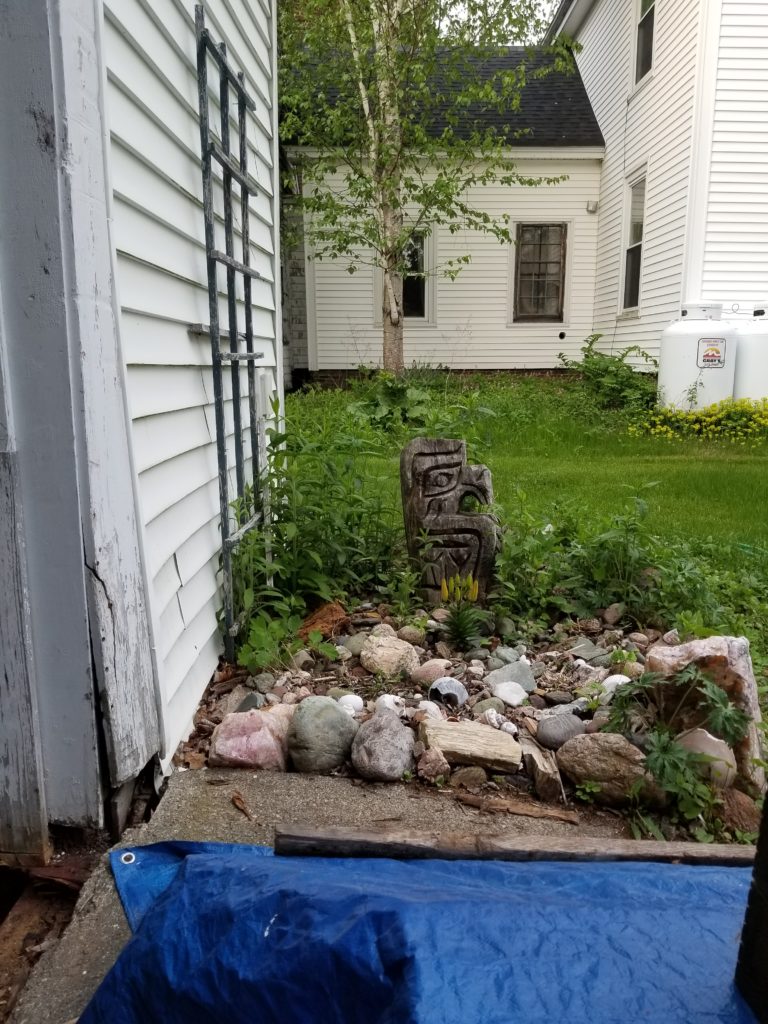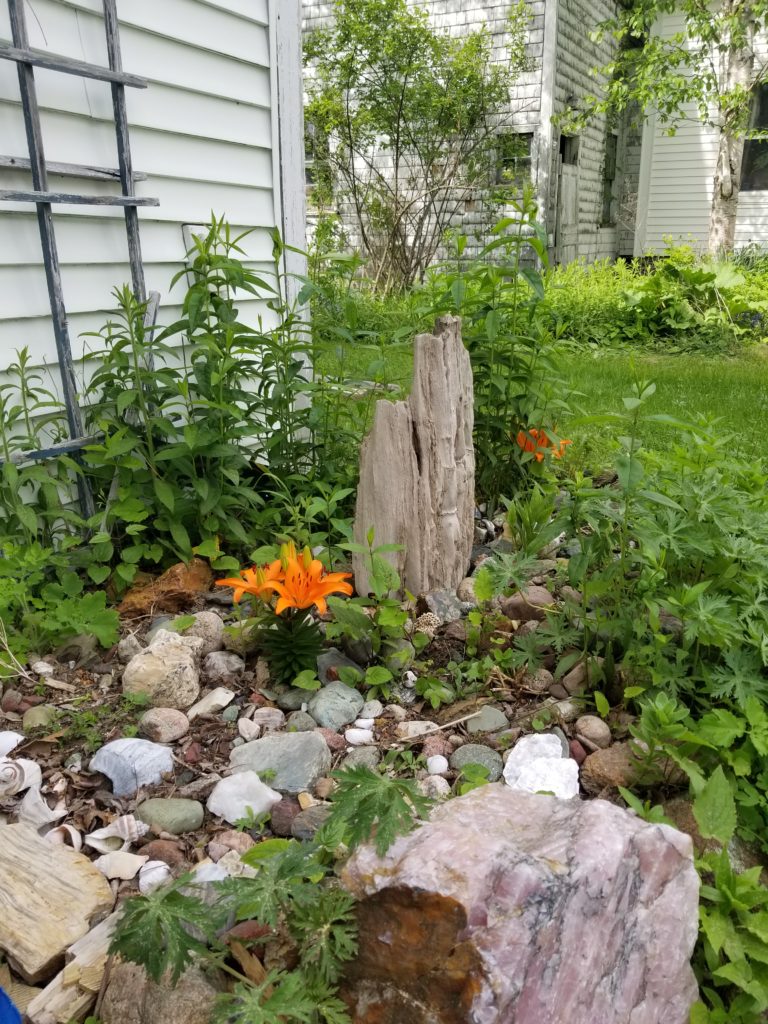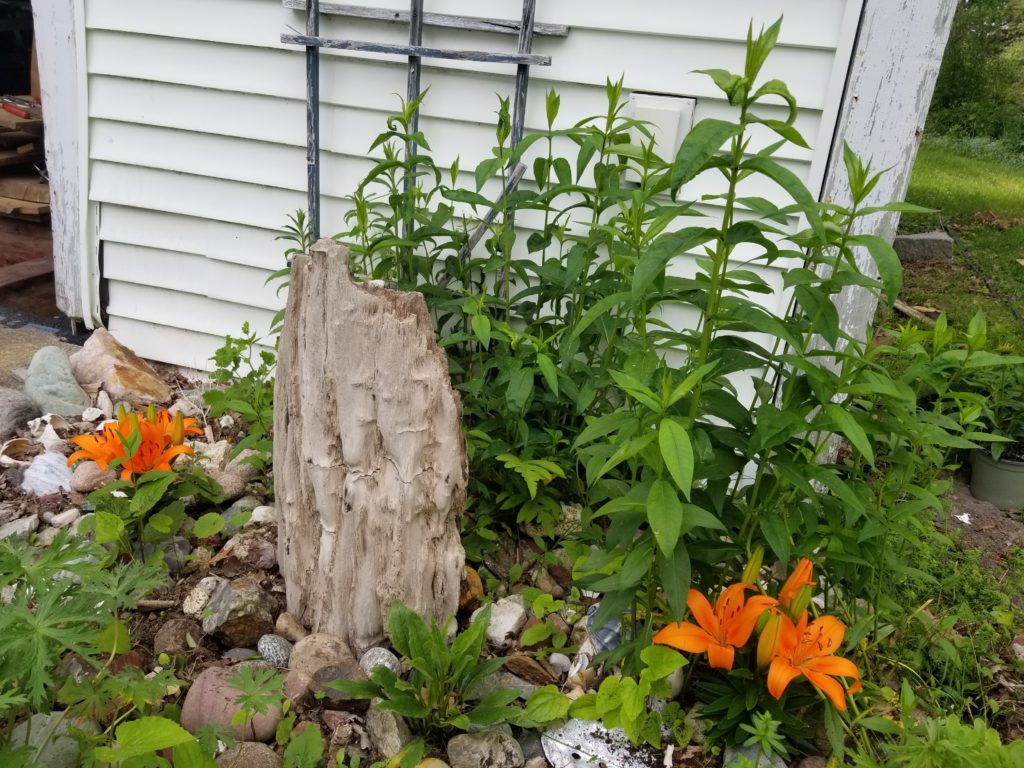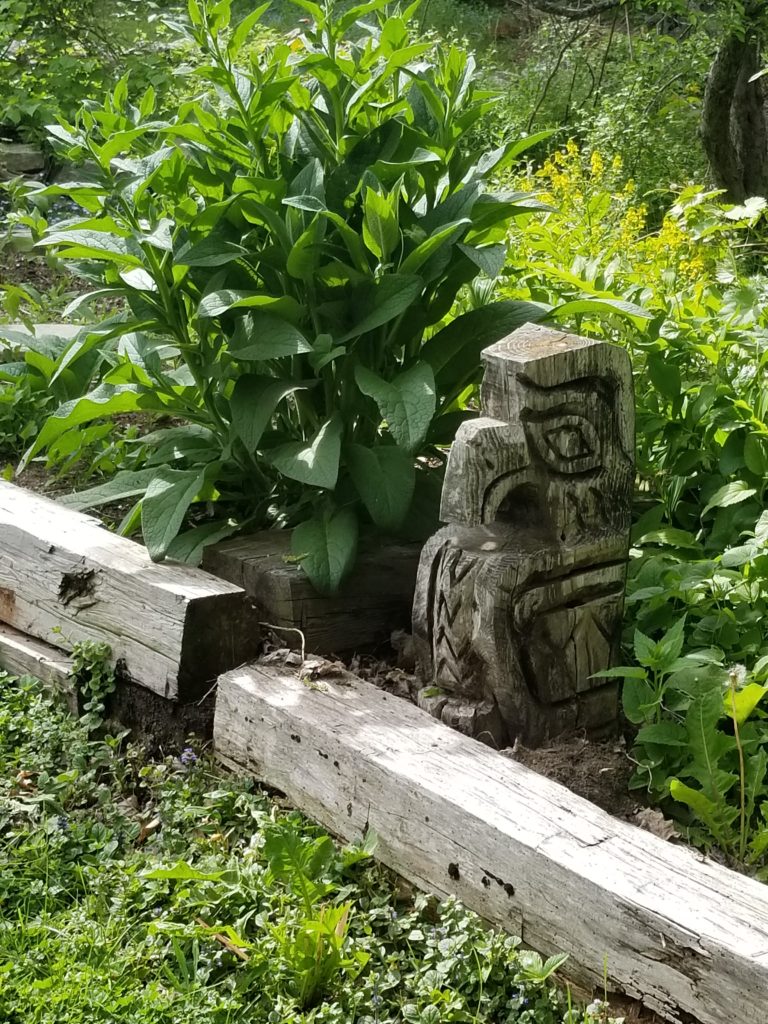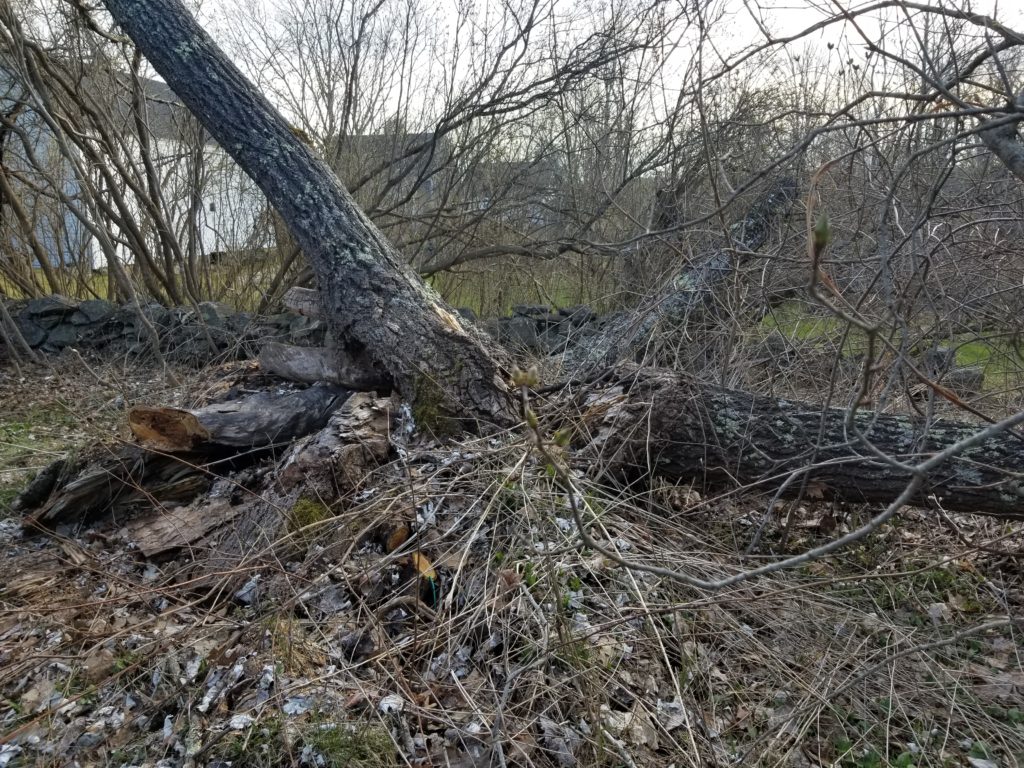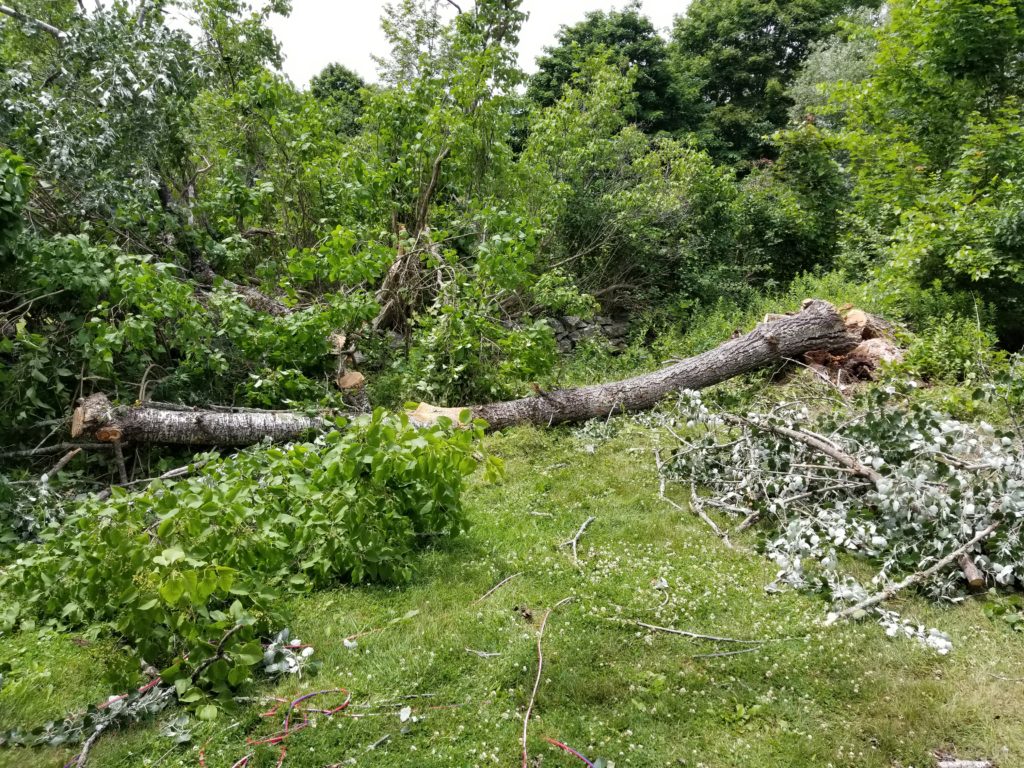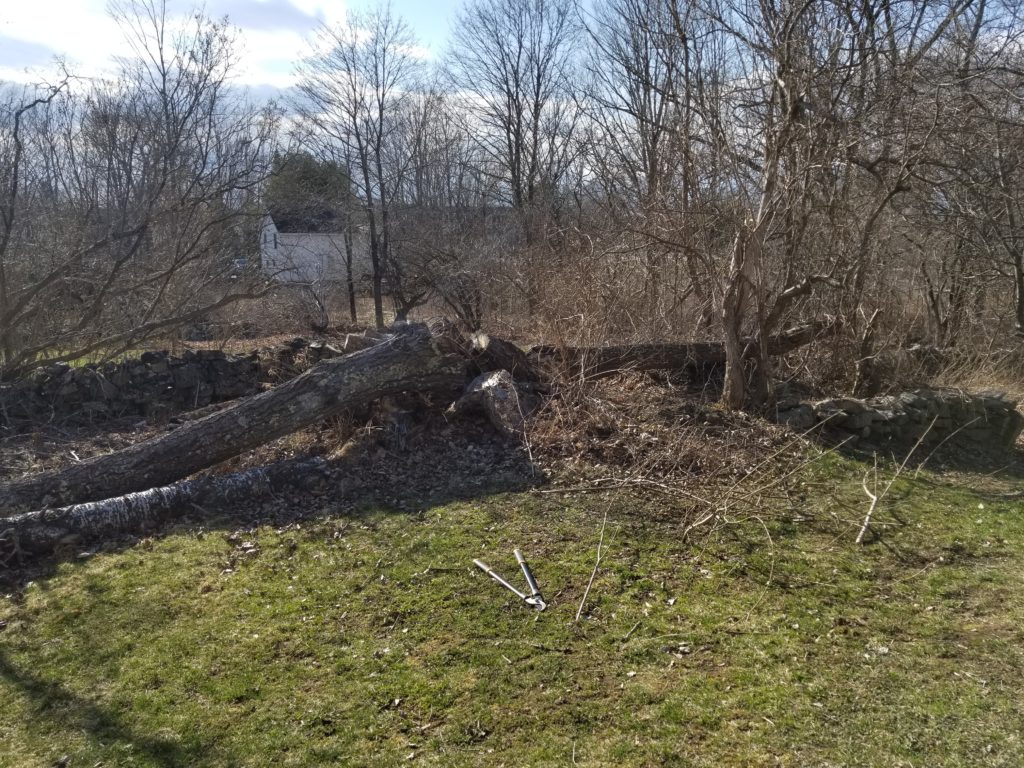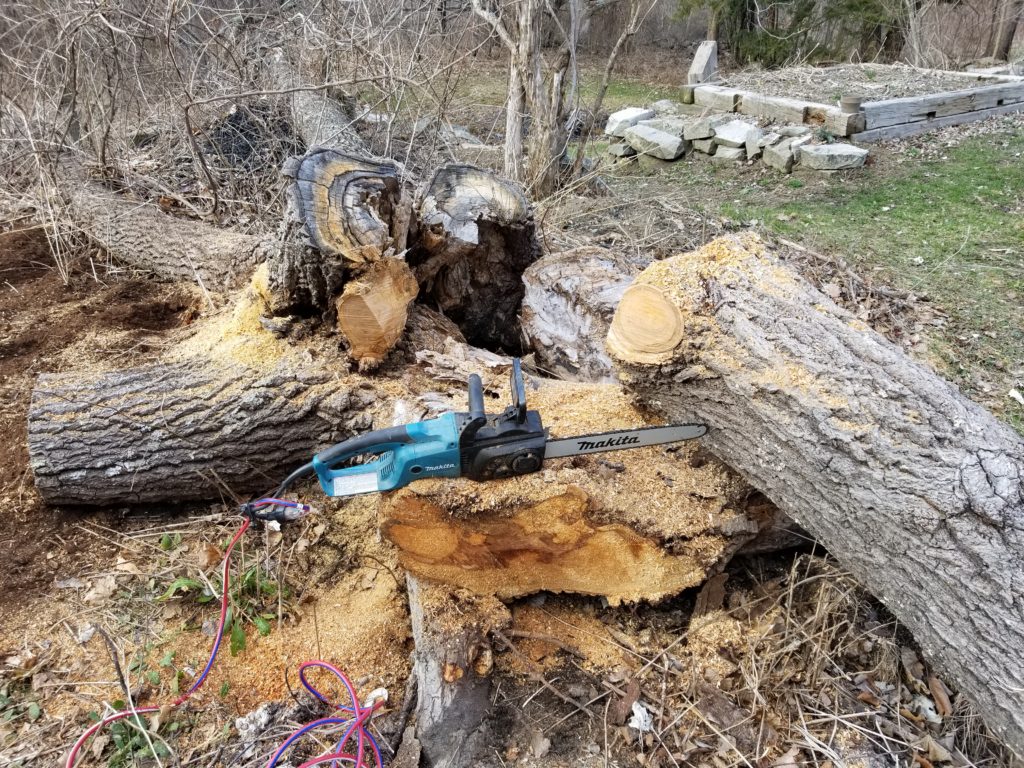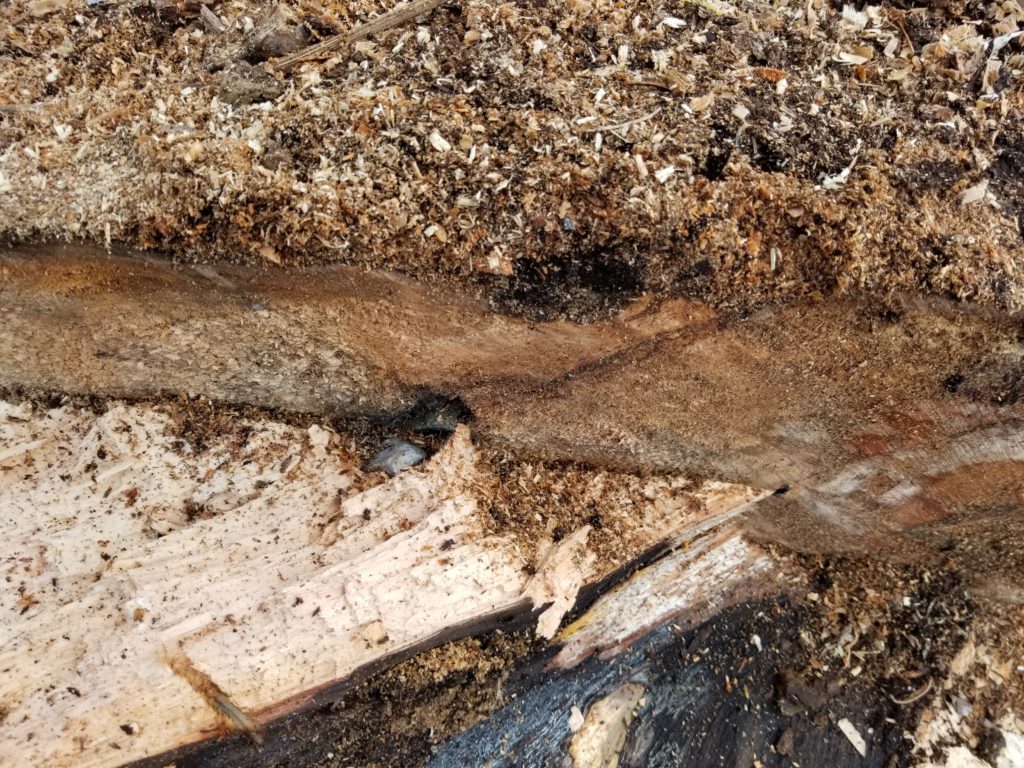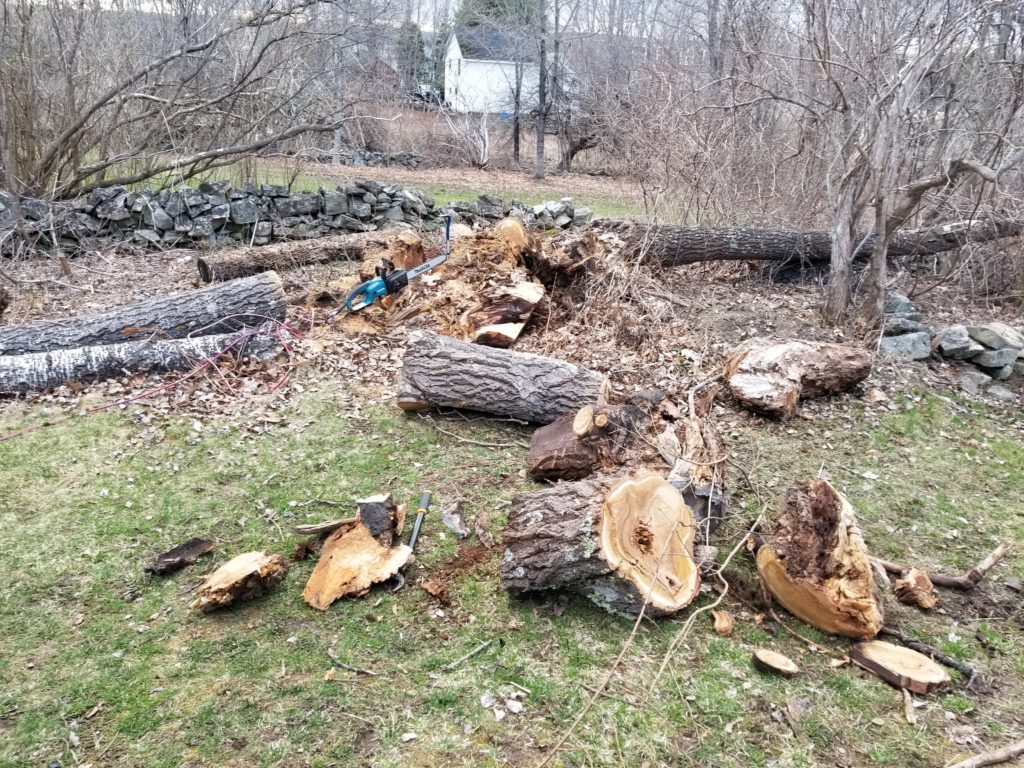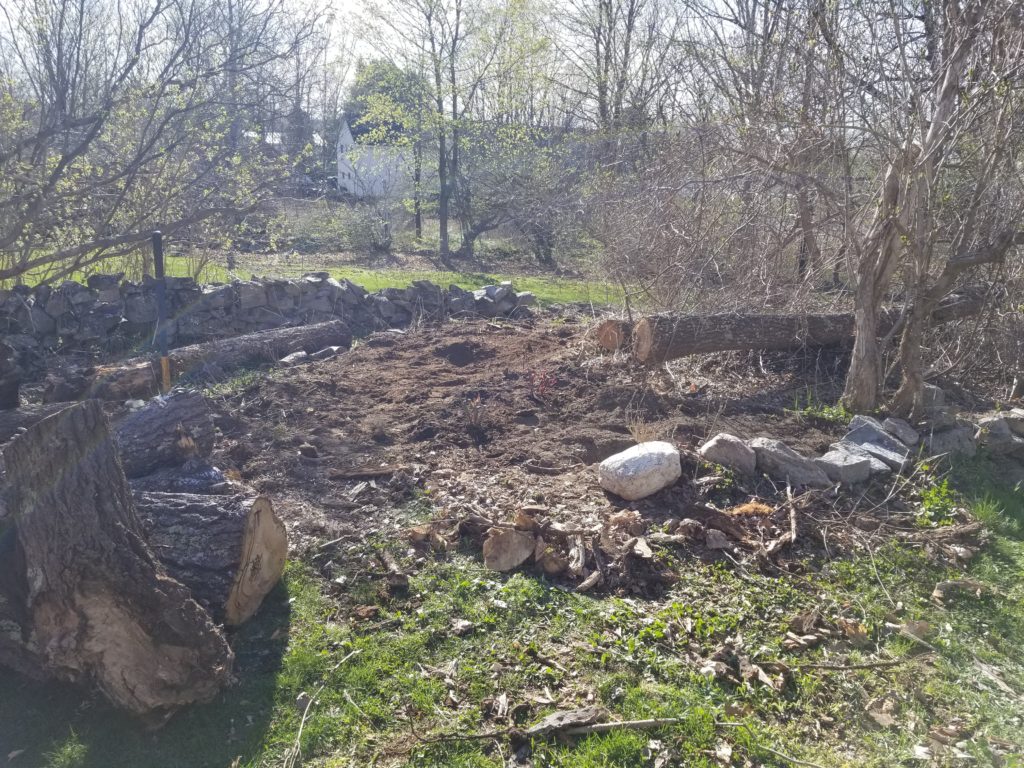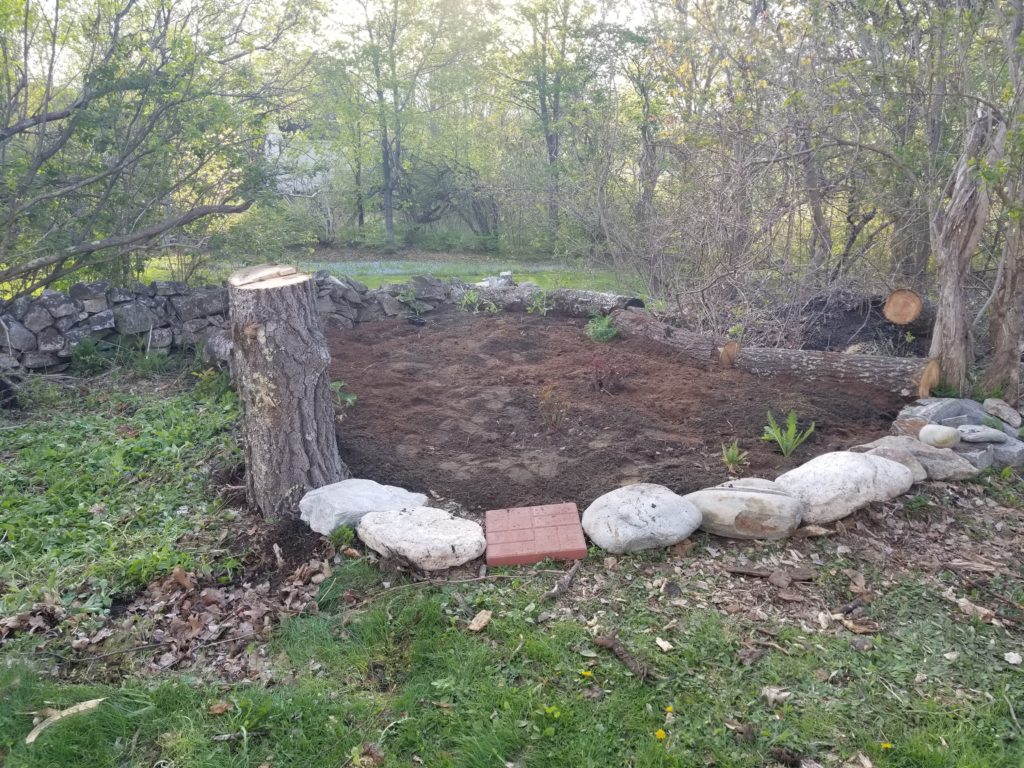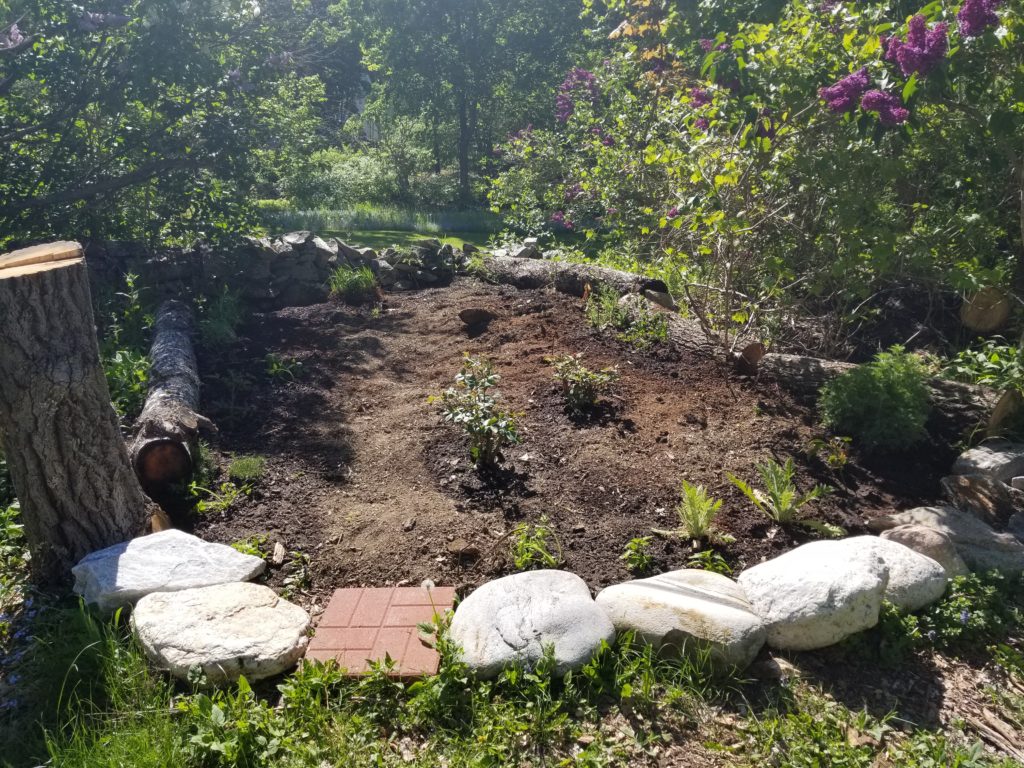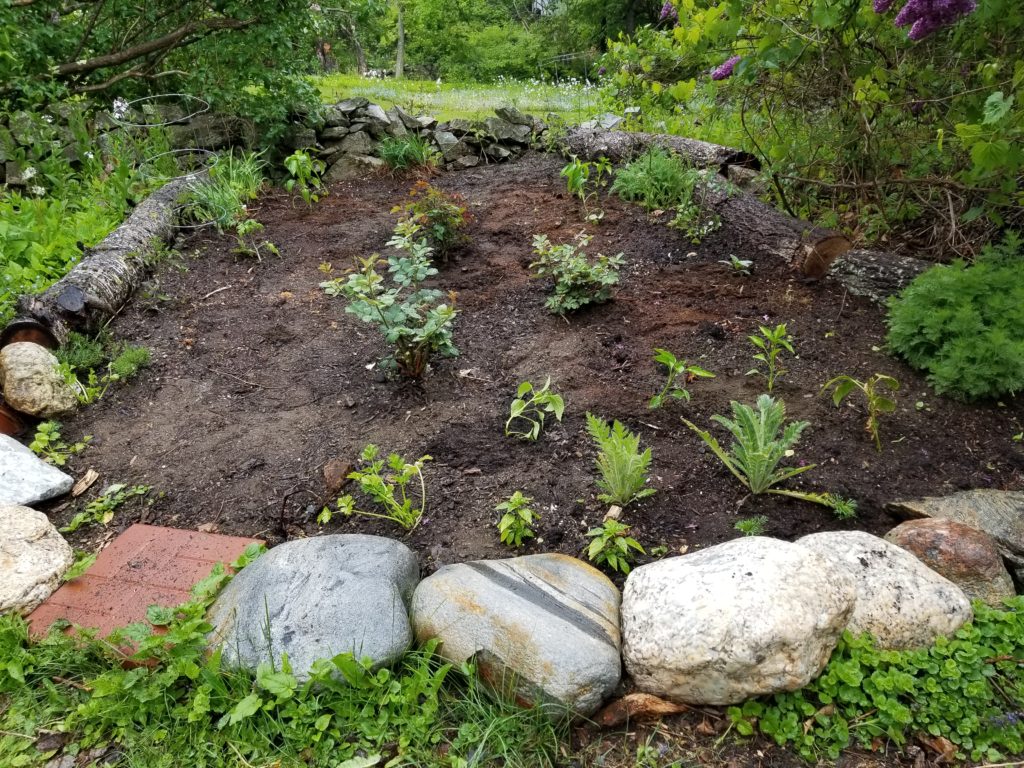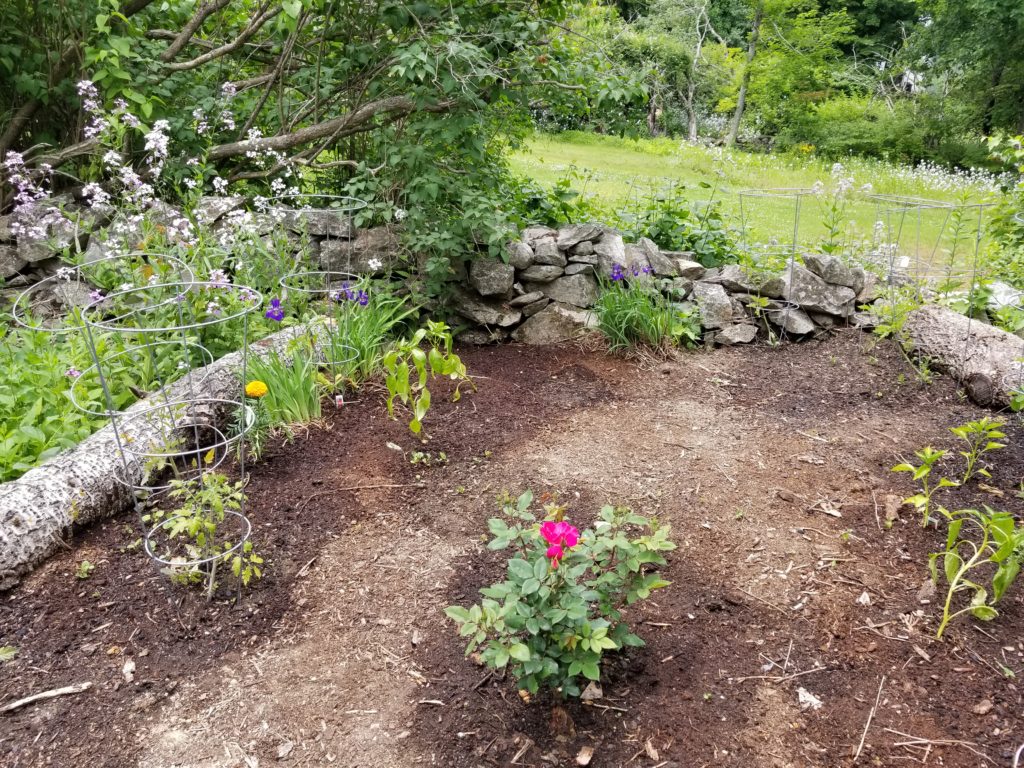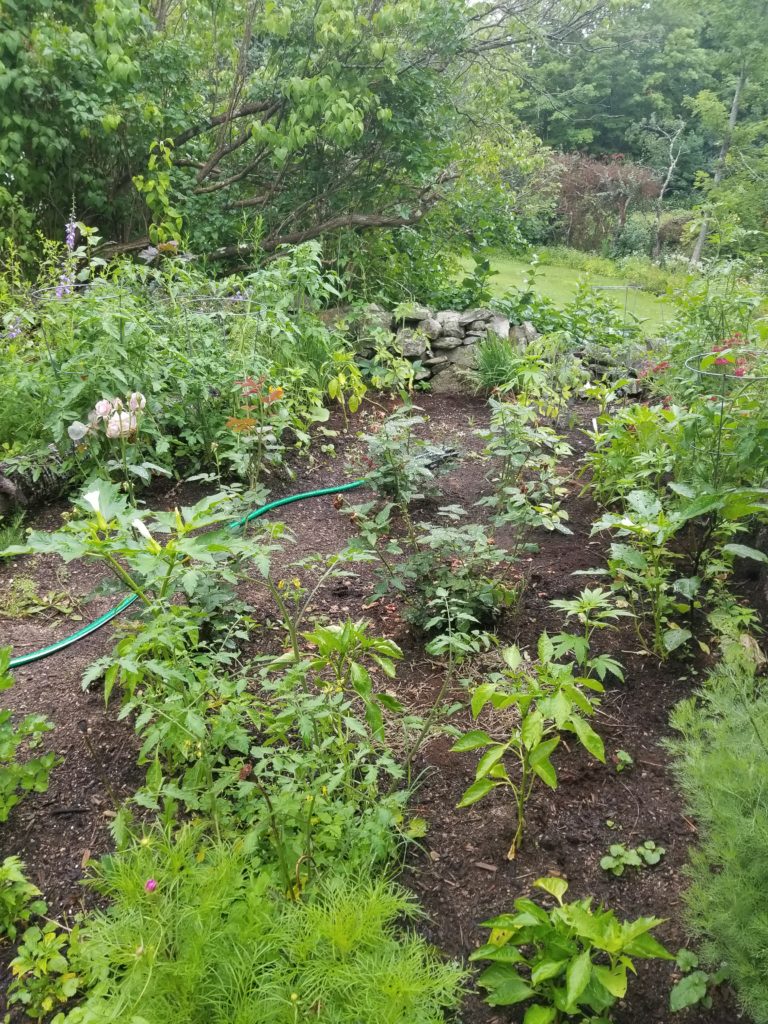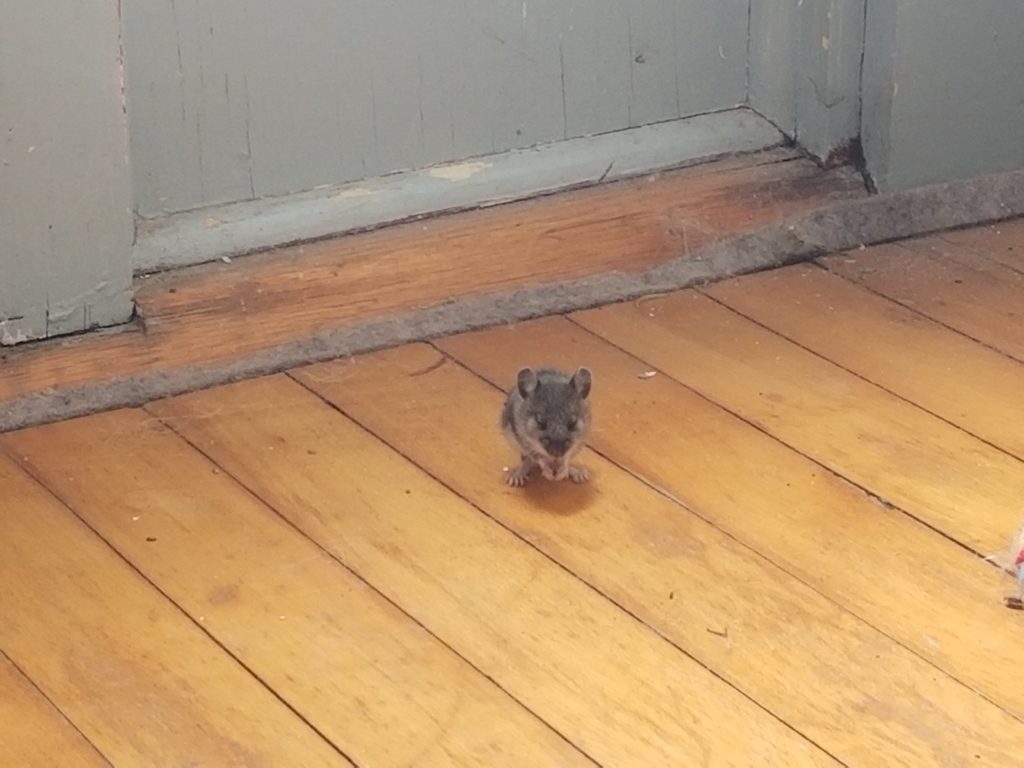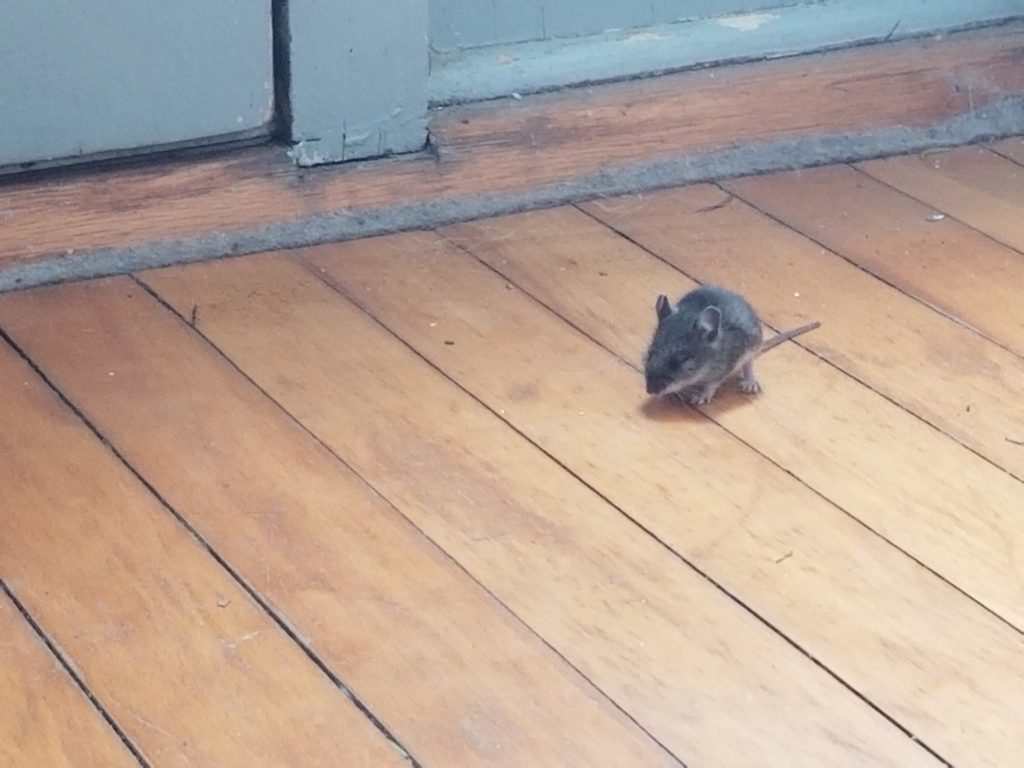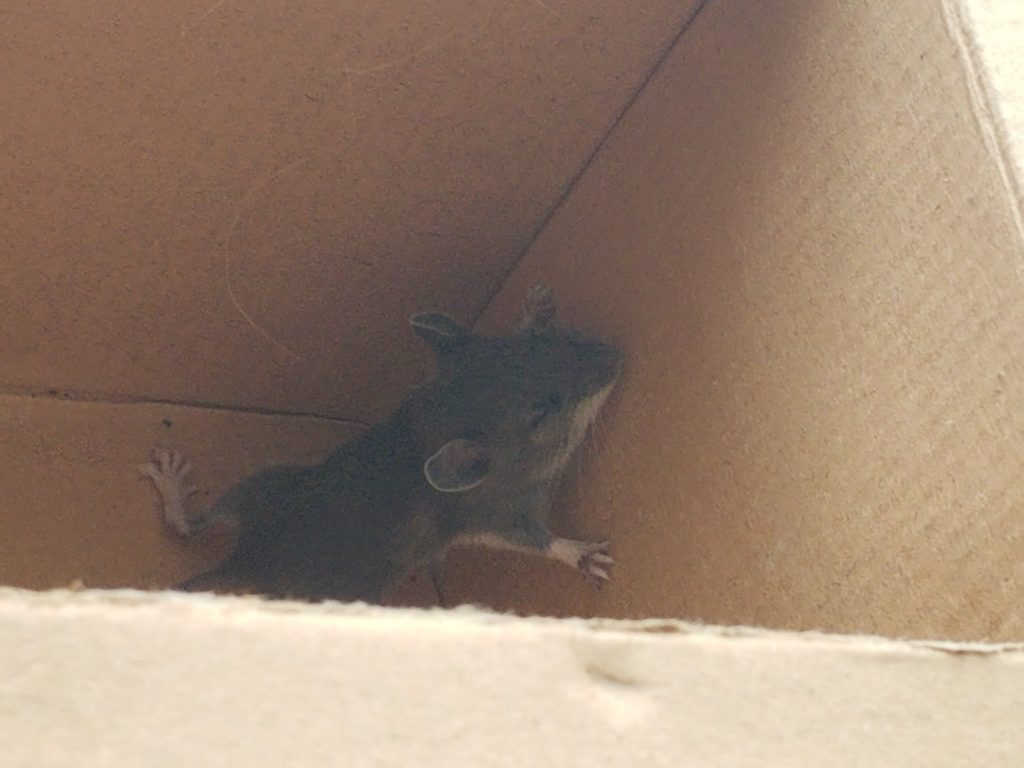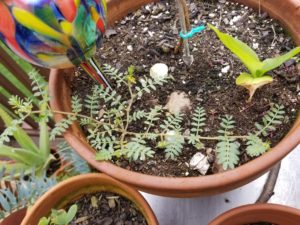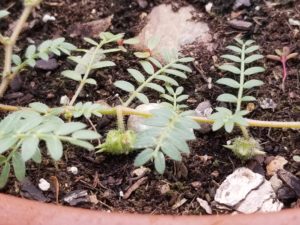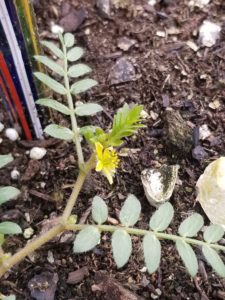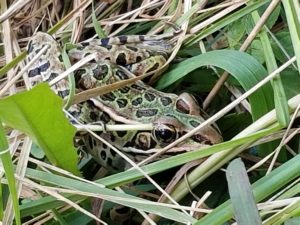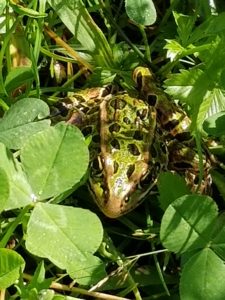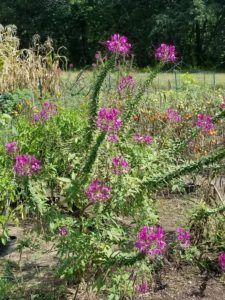I’ve taken a clockwise spin, that is if you are looking down on the earth and not up from the center, around the house to capture something of each of the gardens. It’s five years that I’ve been here in Maine and each year the gardens have grown. Forgive, therefore, the length and detail of this post, or skip it entirely if you’re short on interest or patience – I’ll be getting into the weeds. For each garden I’ll try to list what’s growing there.
Inside Garden – a joy. Contains a palm tree whose seed I found in Santa Barbara in 2004, an Encephalartos Horridus (you don’t find many of them, a south African blue cycad), a supposed Psychotria viridus (you never really know with purchased plants, a cousin could fool you for a long time), a supposed San Pedro cactus, a bunch of baby dragon fruit cacti, a sprawling Tradescantia Zebrina (that’s the one with the purple leaves), a jade plant, a young (eight leaf) swamp ok, two brown oaks from Estonian acorns, scion of the Tamme-Lauri oak as whose base the acorns were gathered, an aloe plant, two Brazilian Pata da vaca aka Bauhinia, two castor bean plants (still young), one toad lily, and three turmeric plants that decided to sprout from supermarket roots. Quite a mouthful, all that, but immense fun to water and watch the various reachings for fuller life.
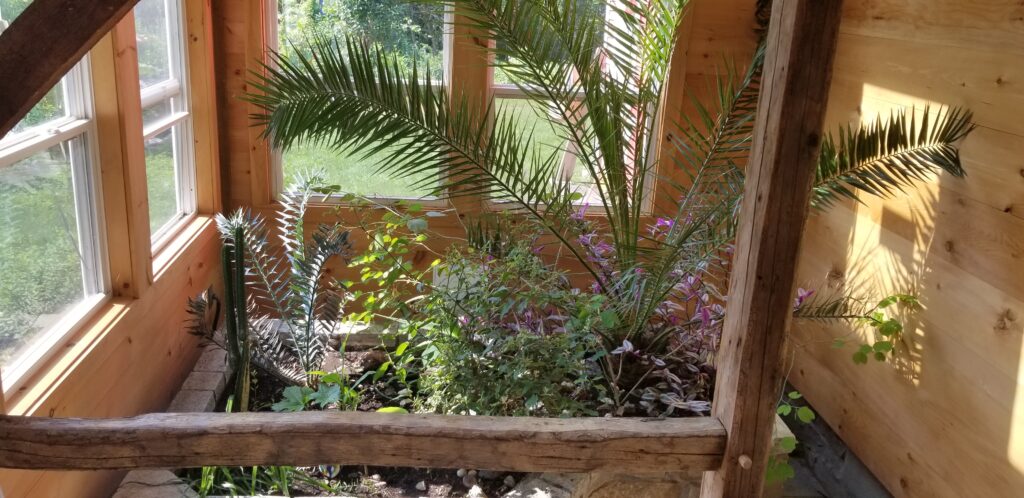
Front of Barn Garden – starts with tiger lilies, then wild strawberries, echinacea, sedum, garden phlox, and clematis on the trellis. Garden also hosts seat of government for Semi-autonomous Republic of Rocks, whose claim to fame is an unrivaled density of diversity (they’d call it representation), considered at most a self-important non-entity by larger communal geological councils.
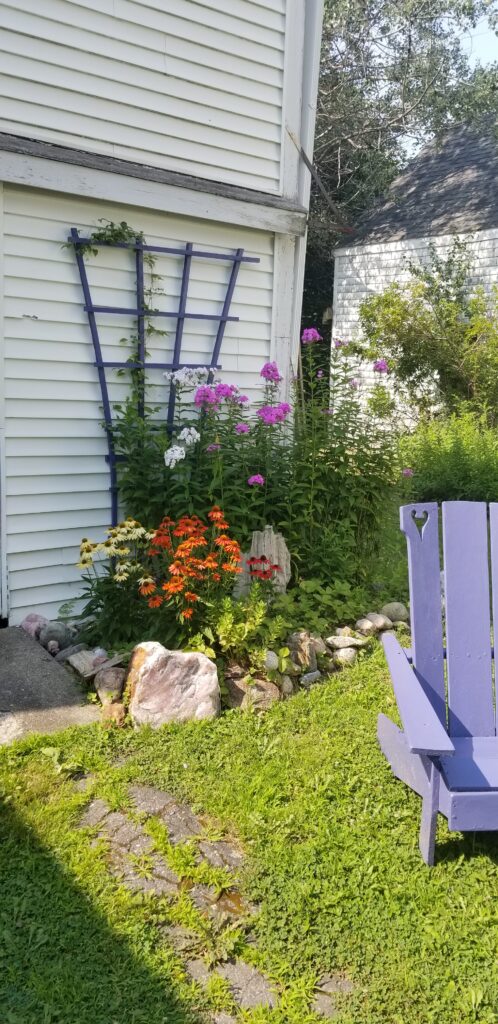
Shady side Garden – not much but ferns and weeds here. A sleeping dog let to lie.
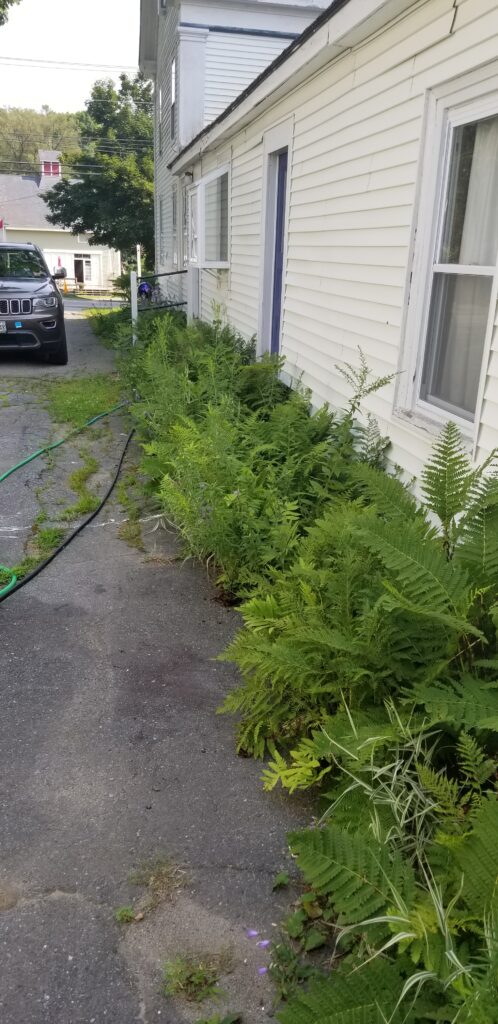
Right Side Front Garden – featuring creeping phlox, platycodon, a wormwood, the ever invasive creeping bellflower, ferns, lupines, weeds, weeds
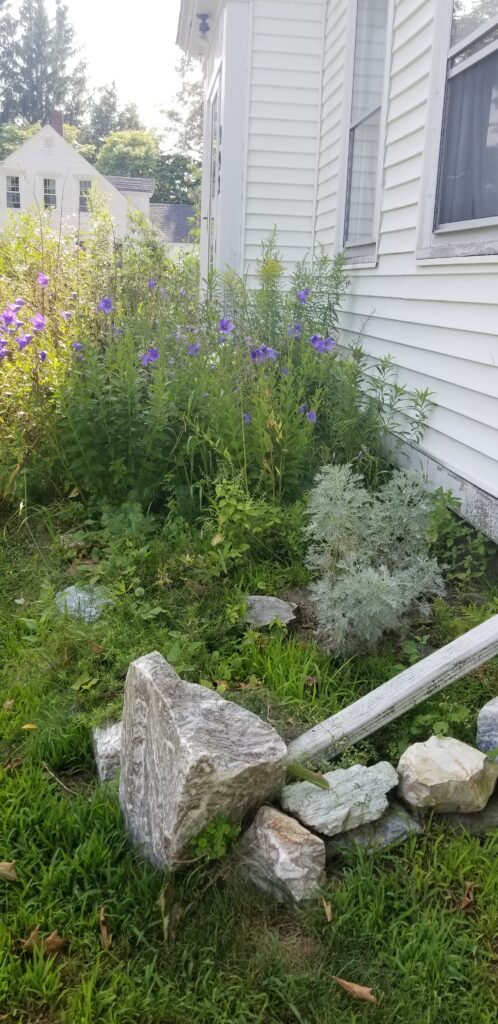
Front Center Gardens – are at their finest in Spring. Daffodils, hyacinth, iris, lupines, ineradicable euphorbia spurge, some great peonies, goldenrod, weeds. The path there weeded regularly by flamethrower, a fun little exercise.
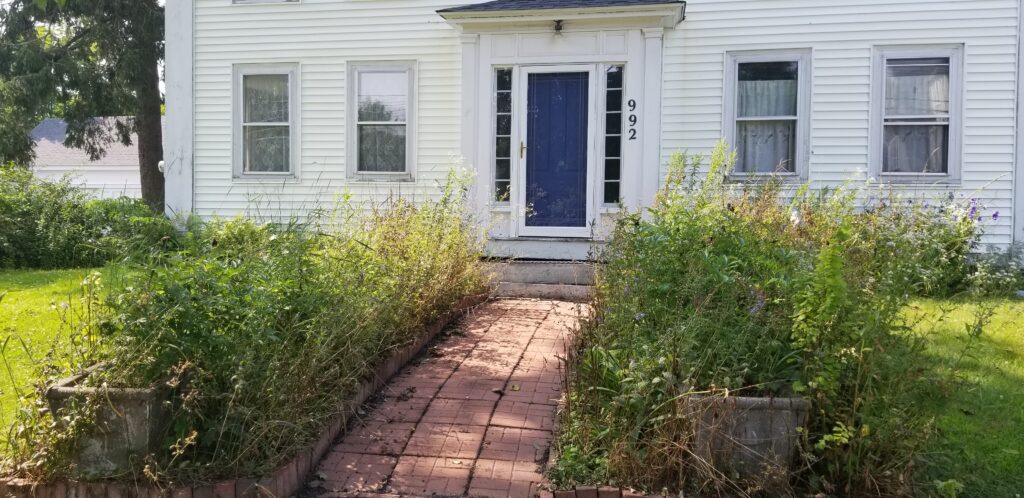
Front Left Garden – newly attended this year, no plan yet. Wormwood, castor bean, cosmos, fragrant peas, tulips, ferns, beach rose.
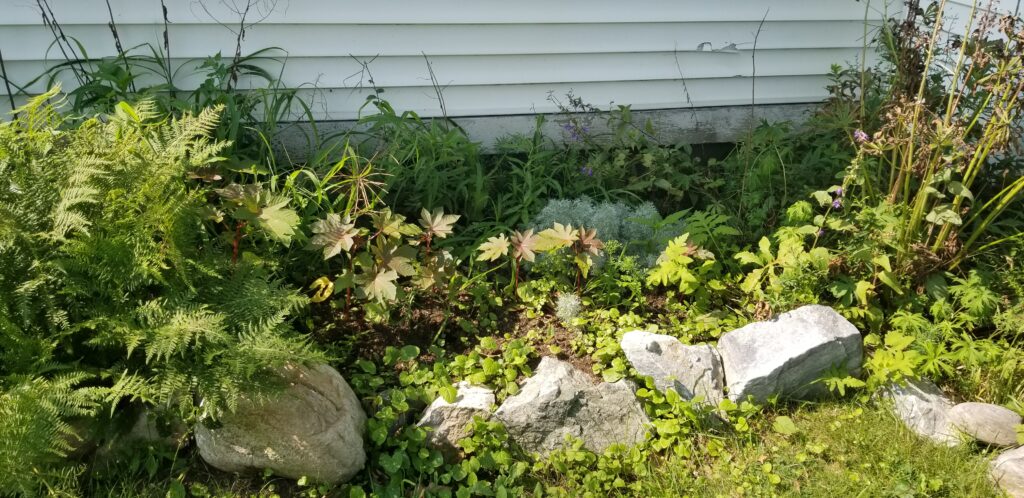
Blue Globe Thistle Encampment – in its second year, the first year it will bloom. I’ve seen amazing stands of this, hoping that with time this too shall become one.
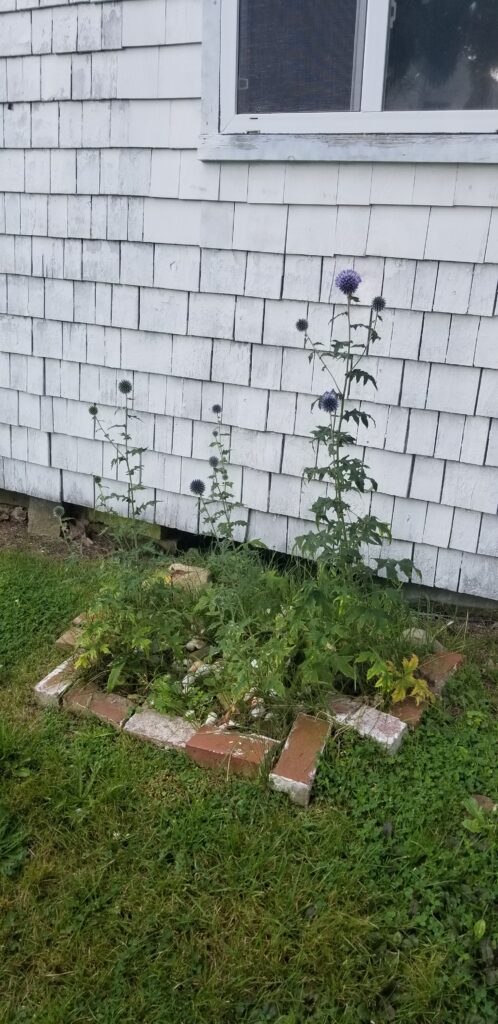
Yellow Iris Encampment – as with previous, an encampment not really a planned garden but a border put around a place where something noteworthy was planted. This one mostly weeds but for a few weeks very nice. Needs thought and management, like much.
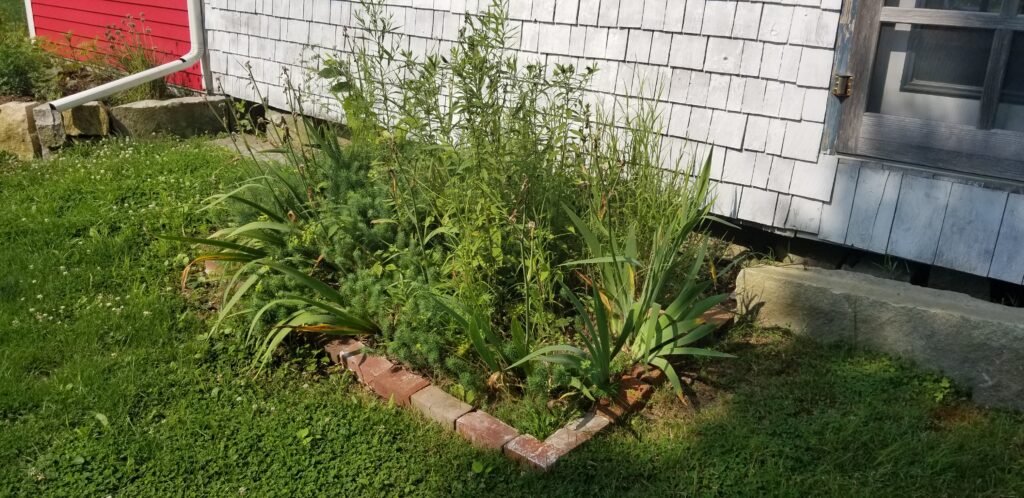
Hosta Enclave – two huge blue leaf leaning hosta and one variegated take up most of the space beneath an ancient lilac. They’ll want division in the fall. On the left of this enclave (unpictured) there are tulips and daffodils in spring, Solomon’s Seal (also ineradicable), sweet woodruff, a stray blue globe thistle, and peonies.
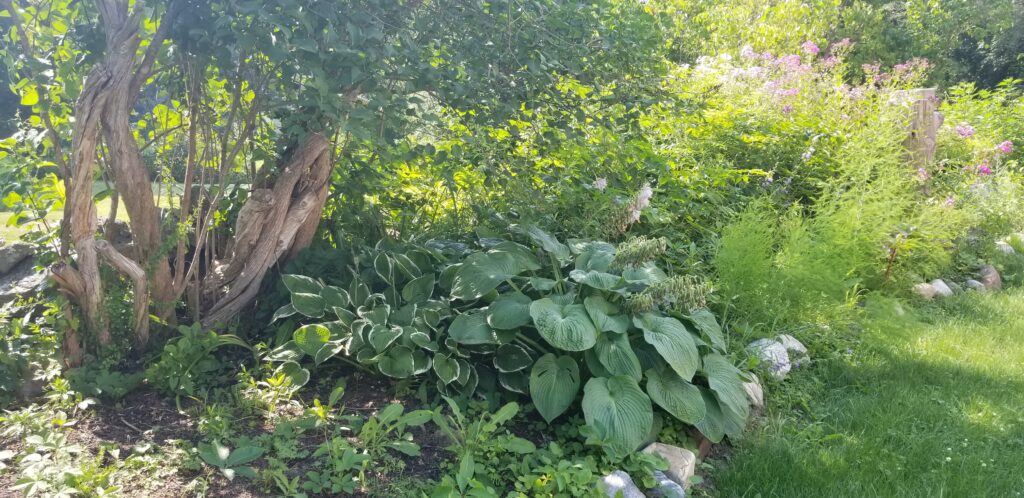
Asparagus/Phlox Area – is only partially managed. There’s a rock-bordered front section with asparagus that’s struggling (year 3) to become established. Behind that a tangle of wild blackberries. To the right a very thick area of tall garden phlox, pink and white, with a few evening primrose hiding in the mix.
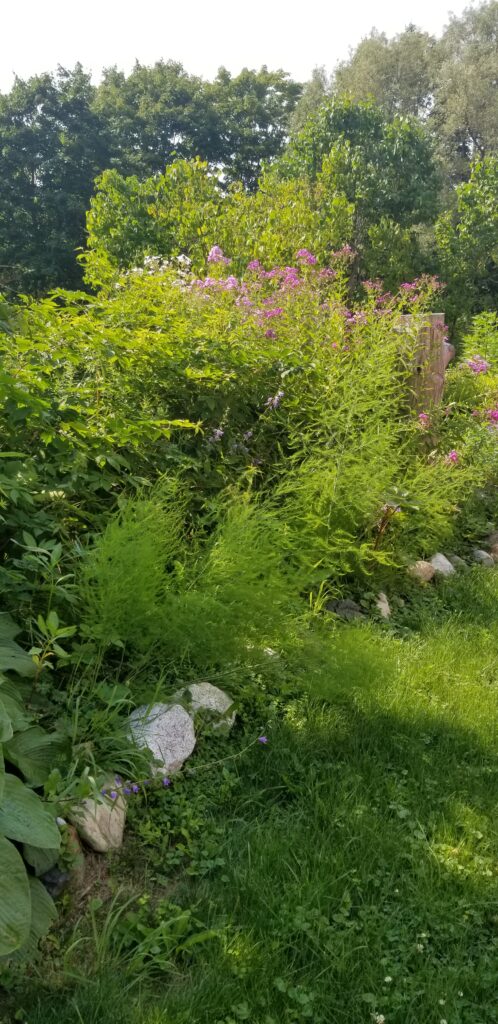
Outside Greenhouse Garden – certainly the best managed of all. Mostly an herb garden with various hangers on. From the left – borage, solanum retroflexum, fennel, oregano (one sort), rosemary, tarragon, oregano (another sort), rue, lovage, more solanum retroflexum, lemon balm, marigolds (from seed), two lulo, an assortment of not so thriving exotic peppers, some henbane, more rue, castor bean, and a solanum nigrum.
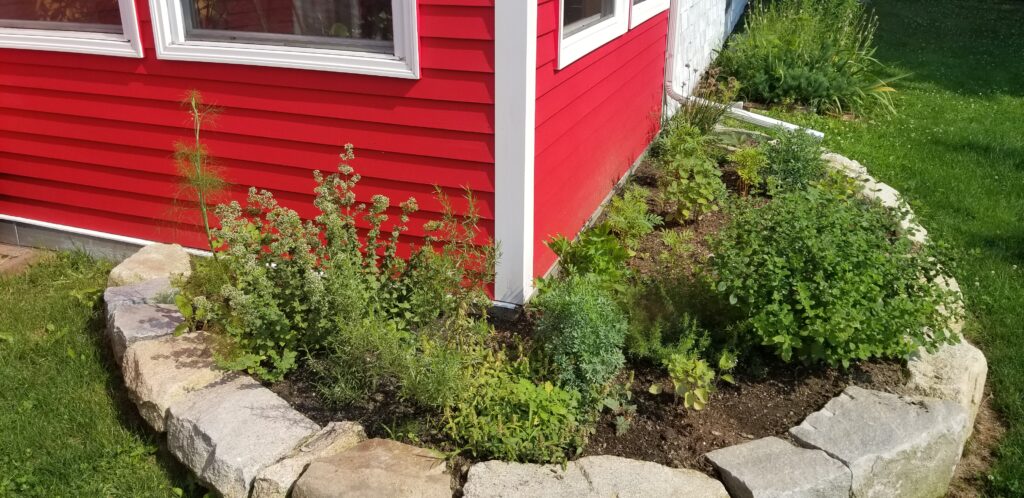
Seeded Wilds – a very lightly managed area where I sow seeds as if I had a plan. This year I’m happy to report that peas, lima beans, tomatillo, long naturalized datura, mint, and some amaranth are all competing heartily. Lupines, lilacs, and hosta border on the left.
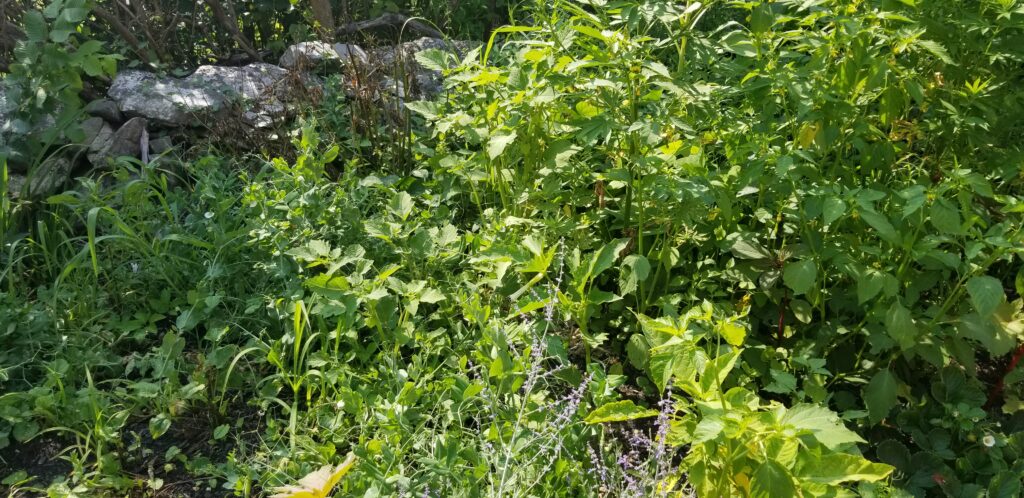
Main West Side Garden – the entire west side garden runs a least a hundred feet. The front part is shaded by ancient hemlocks. It’s part shade by the asparagus and in the seeded wilds but then starts to get sunny moving towards the backyard. Gracing the foreground is a very large castor bean – they’re so exotic, unpictured to the left being Russian sage, brugmansia, to the right being solanum linnaeanum (one of the delightfully angry solanaceae, thorny, poisonous and ornery, a decorative plant), marigolds, wild and cultivated strawberries,
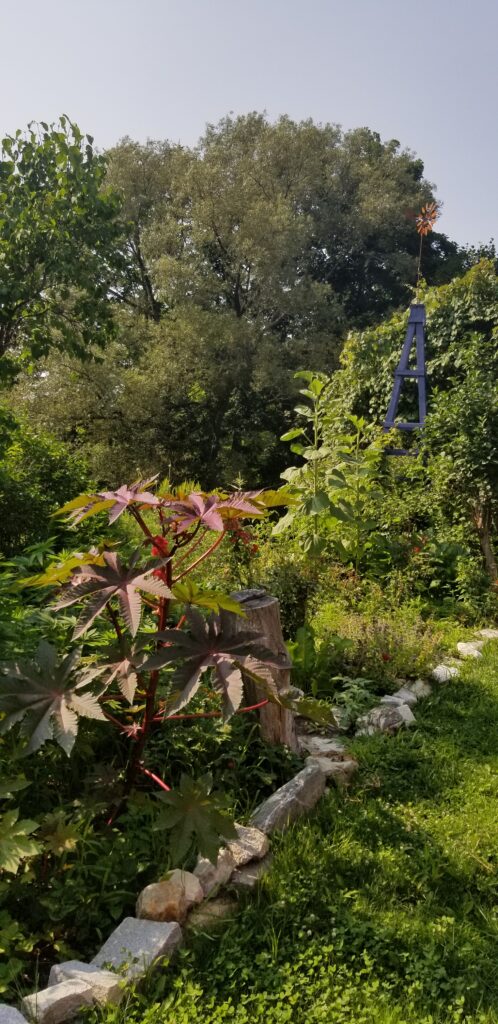
Rose Garden – not really a formal portrait here, just a by location reference, it’s about 25 x 8 mostly to the right of the line between the foreground standing log and the the whirligig.
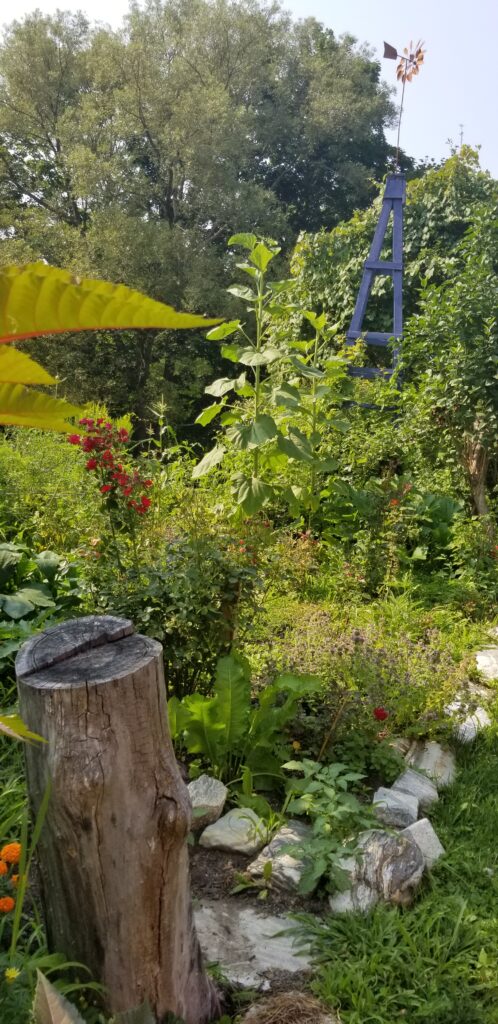
Side Veggie Garden – is behind the rose garden, has two towering Mongolian sunflowers, beets (8) tomatoes (16), cosmos, two very vigorous volunteer summer squash, Georgia candy roaster squash(6), mint, marigolds, oregano, horseradish, various volunteers.
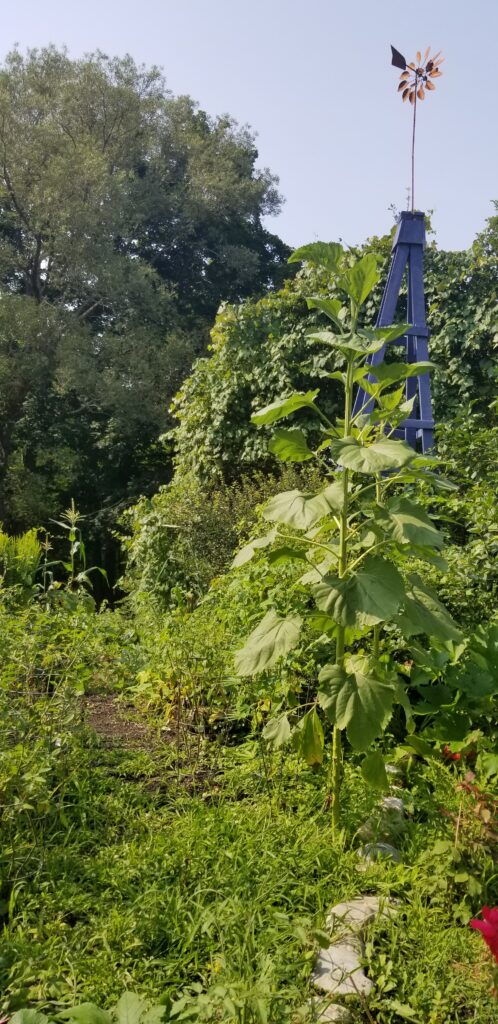
Beyond the Whirligig Garden – has 3 stalks of corn, 13 potato plants, castor bean, datura, purple sunflowers, mint. This area is mostly new this year, a takeover of the sunniest parts of ‘the grapevine plateau’ (ok, not a takeover but rather a righteous reclamation of historical lands, uh huh, uh huh). It is (infested/populated) by native tansy, Boston ivy, grapevine, strangler vine, woody nightshade, bittersweet as yet it is unclear if the native populations can be brought to order. Re-education seemingly ineffective.
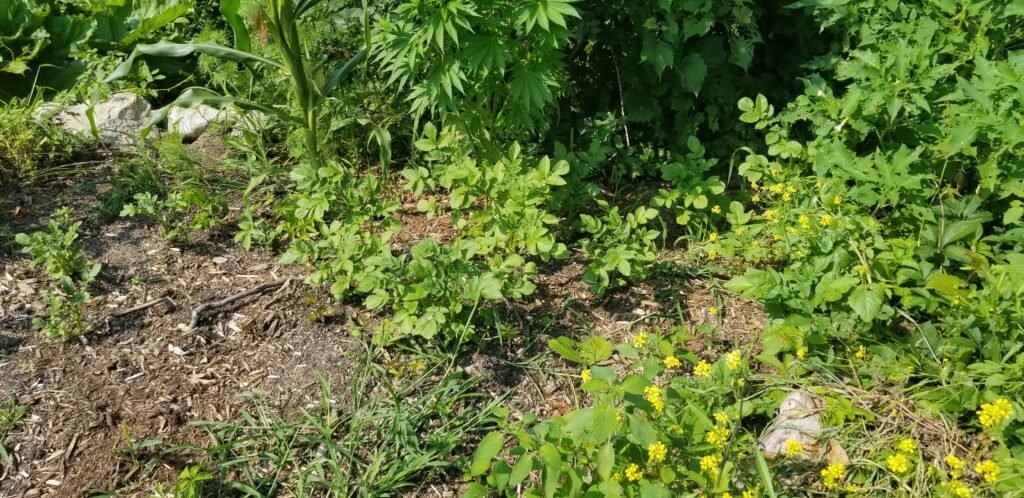
Lilac pocket – there’s a partial shade spot beneath the ancient lilac where currently celery, sage, peas and marigolds are growing
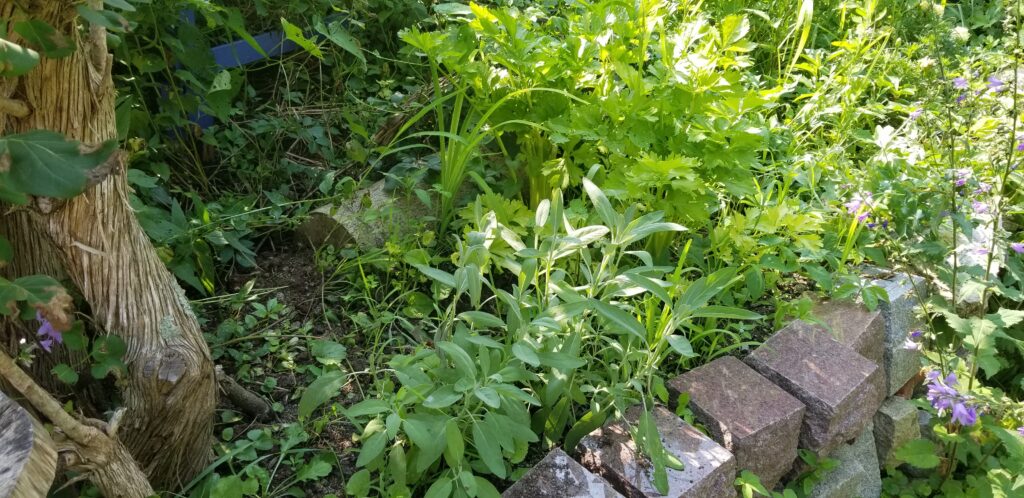
First Garden – in my tenure here, anyway. Had been nought but a sunny spot for day lilies and Solomon Seal. Put a border on it and added 5 yards of nice soil. The back of it is a sloppy stone wall about 4 feet tall. Right now it has string beans, tomatoes, celery, peppers (including one ghost pepper), blue globe thistle, marigolds, lovage, false collard (at the nursery sold as collard greens but having developed white/purple bulbs that look awfully like turnips), onions, peony, weeds
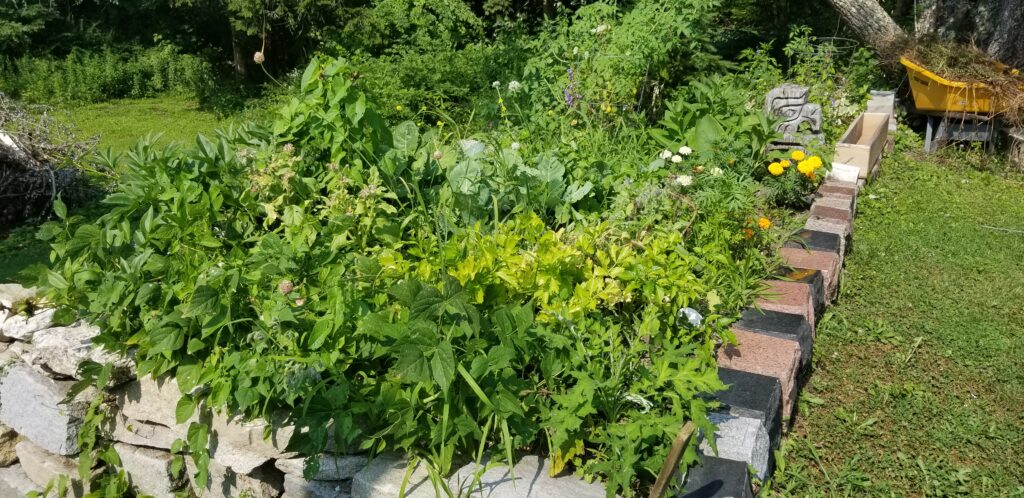
Charlie Brown – named after the ‘Charlie Brown’ Christmas tree, was a two foot sprout growing by the barn door. He was getting too big for the place of his birth. A successful transplant was undertake. Those are potatoes, tomatoes, and comfrey beside him, and an aging Thunderbird.
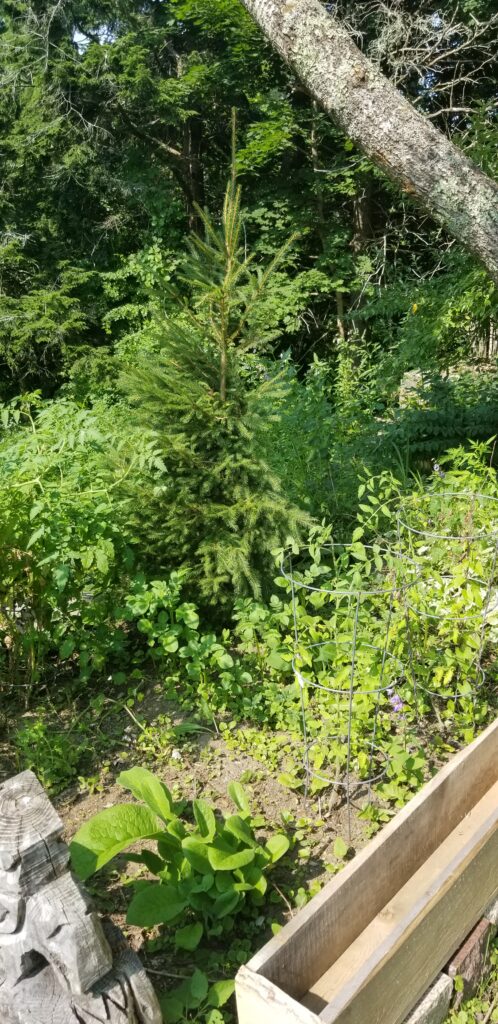
Behind the Barn Garden – First year in service. Quite the ragged set of rocks ringing it. Contains Southern wormwood, lovage, fennel, eggplant, tomatoes, peppers, zucchini, rhubarb, and kale.
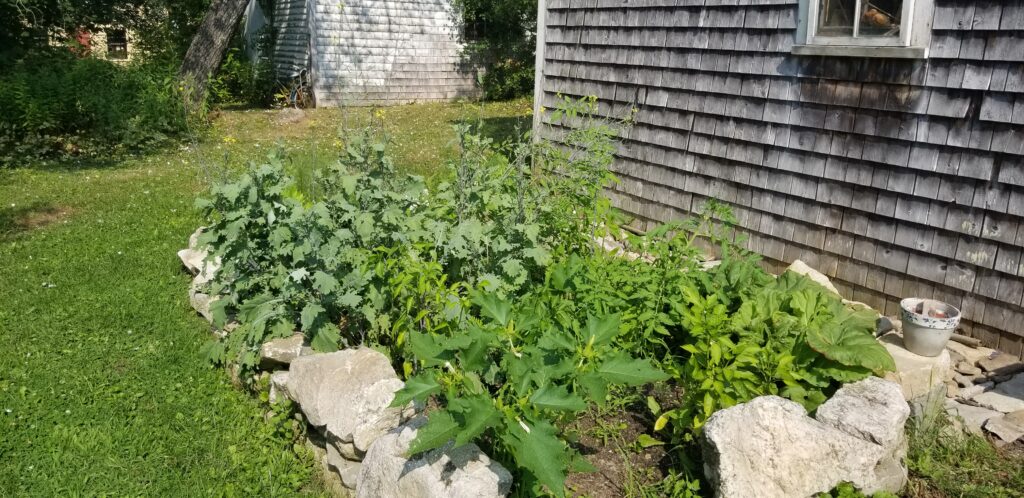
The Nursery – also new this year, a place to start seeds away from competition by savage natives. Currently featuring lulo and eucalyptus.
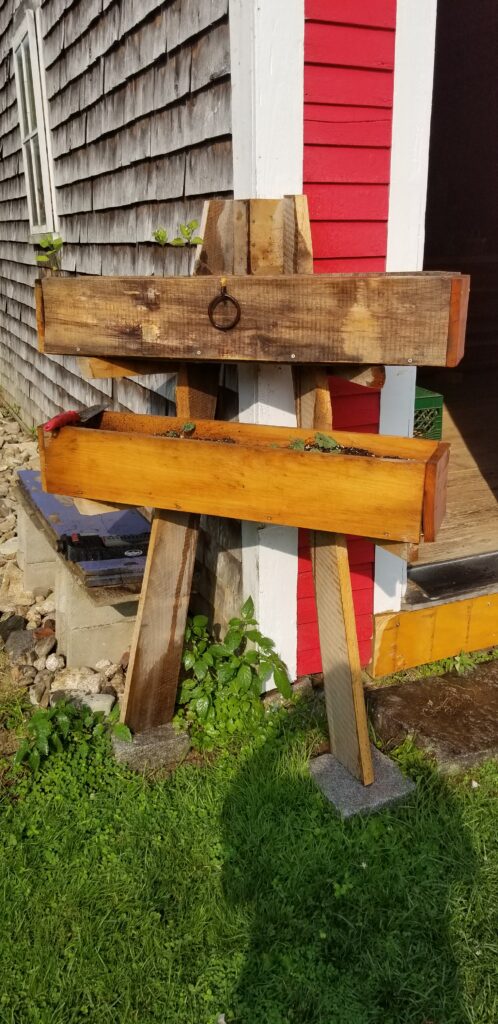
And there you have it, one guided and fairly comprehensive tour of the gardens this year. May all your gardens grow heartily.

